Wandering Through the Largest Castle in the World
Brendan's day trip to Malbork Castle turned into a great exploration of the rich history and culture of Poland. One of the many must-see places in Poland.
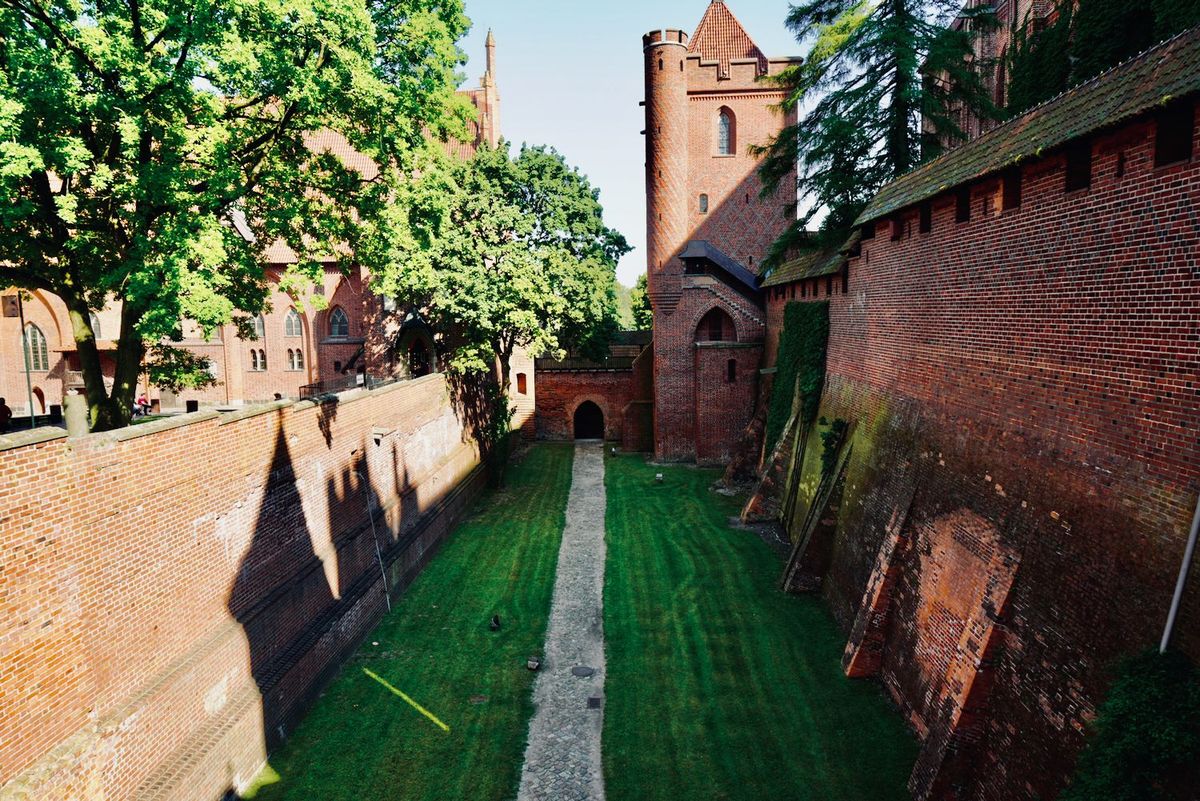
I've spent almost 3 years in Poland so far and I'm still continually finding new places to explore. There is so much to see and experience in Poland that I'm not sure it's possible to see it all – but I'm working on it. Being that my day-trip to Malbork Castle took place during the COVID-19 pandemic, my experience here might be different from yours when you go.
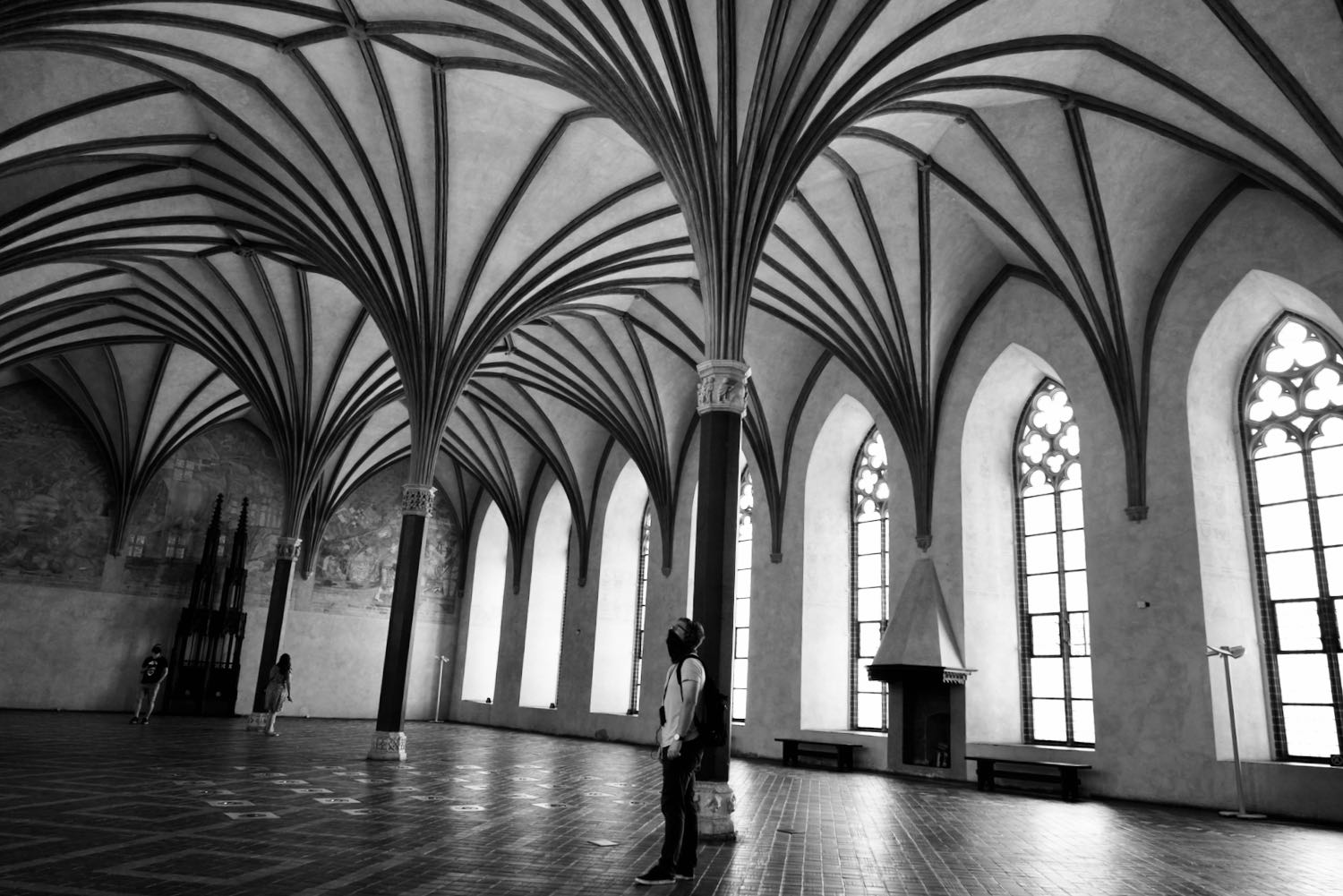
The Largest Castle in the World
A major part of the history and culture of Poland surrounded the Malbork Castle (Zamek w Malborku), which is considered the largest castle in the world in terms of area, and a cherished UNESCO World Heritage Site. It's also on Poland's official list of national historic monuments. So suffice it to say you should definitely add this important landmark on your list when you visit Poland.

Exploring Malbork Castle During Covid-19
I crossed over the Vistula river and arrived into the town of Malbork around 12 noon, having driven from Toruń. I passed by the old town district, travelled through a couple roundabouts, and easily found the nearly empty parking lot to the left of the castle entrance.
I grabbed my day pack from the rear seat, pulled on my face mask and headed for the ticketing office. The ticketing office is easy enough to find and I got the audio guide with my entrance ticket.
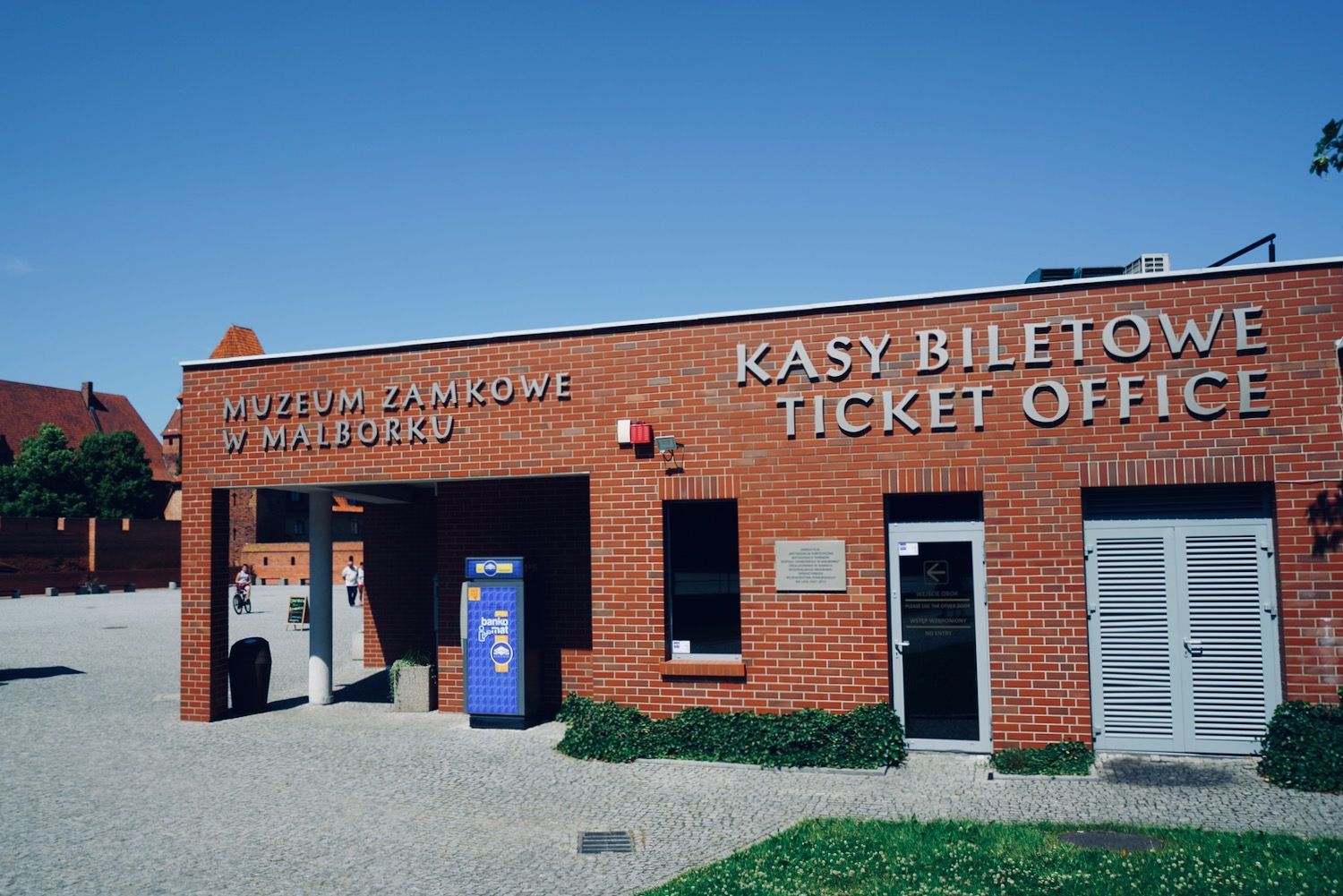
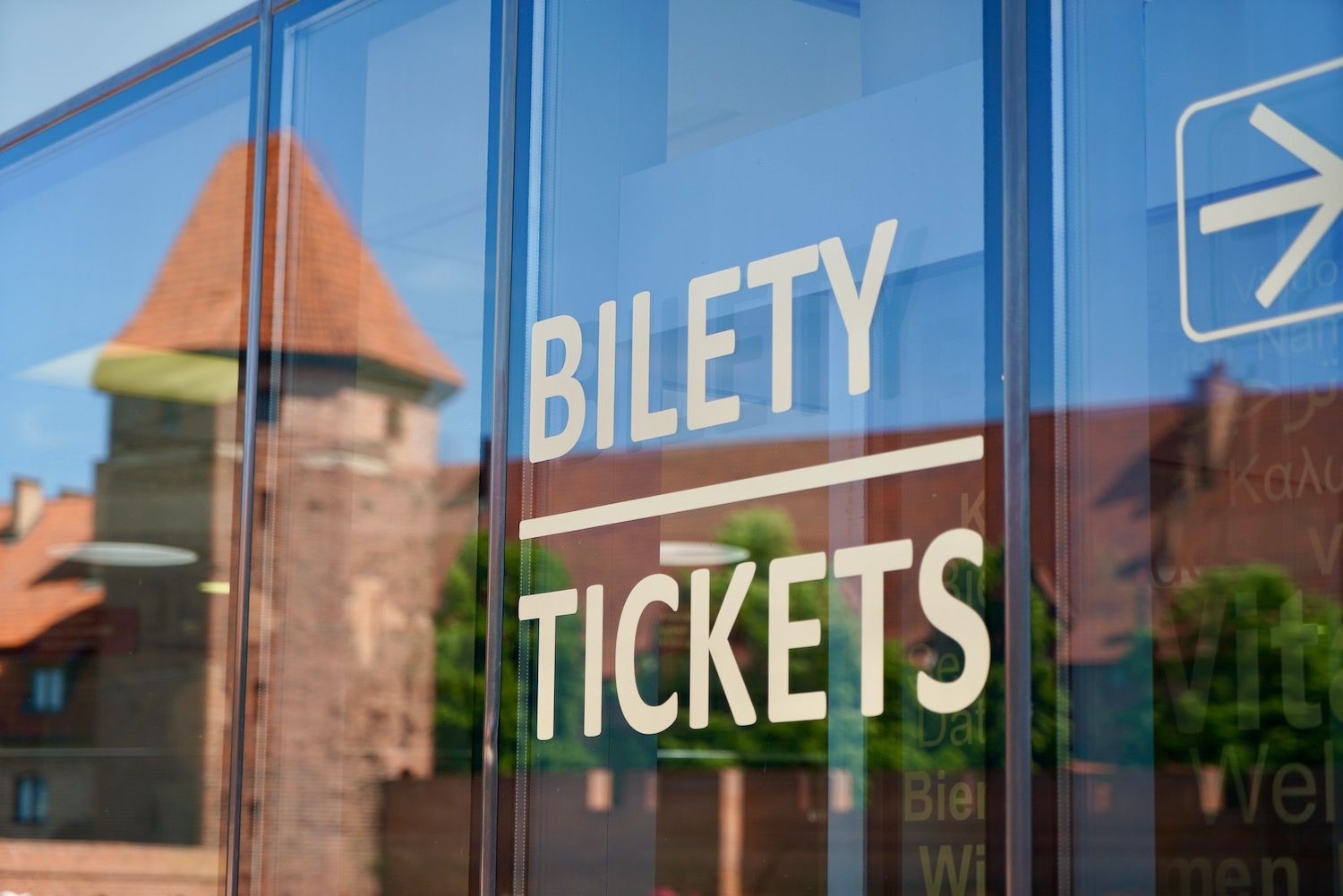
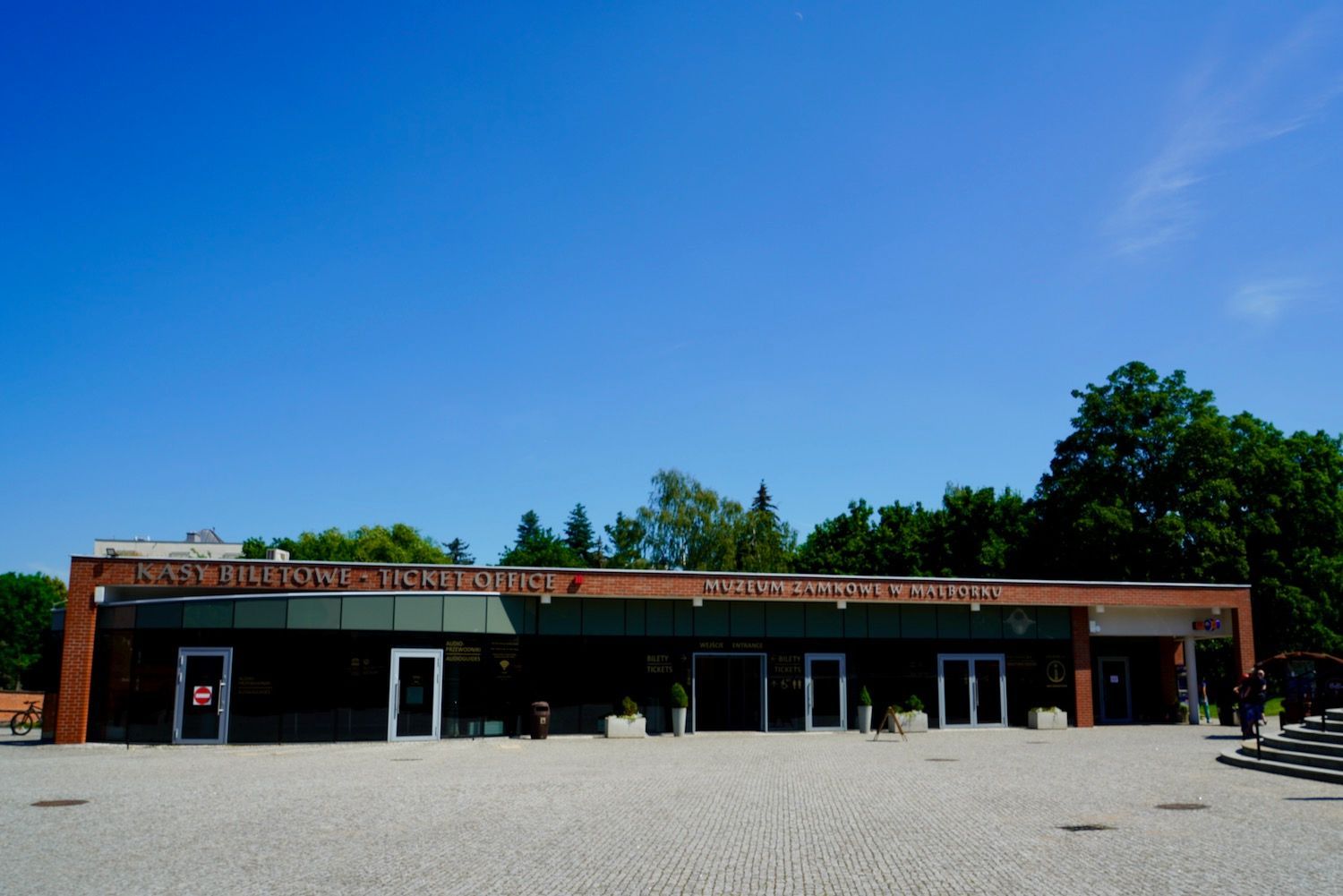
I find these kinds of audio guides so helpful and really worth it. I've gotten audio guides at a few landmarks now in Poland and Spain and they add so much to a self guided tour. Definitely worth it if you want to make the most out of your visits! 👍
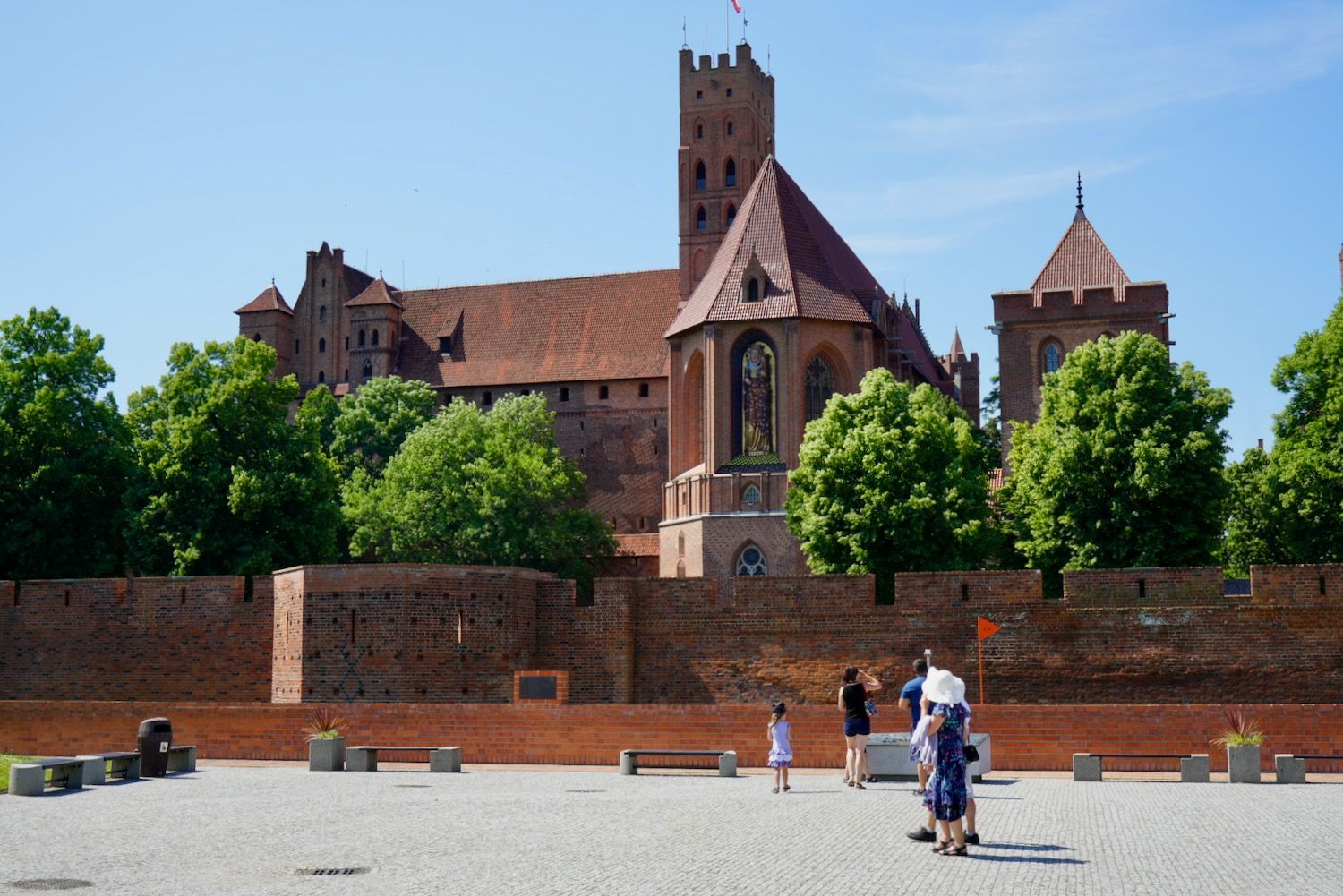
A Brief History
I enjoy diving into the history of Poland and central Europe, and the Castle of Malbork had a big part to play in it. It was constructed by the Teutonic Order in the 13th century, with the original German name of Marienburg – in honour of Mary, the patron saint of the order.
As the crusading order lost their fortifications in Acre (present day Israel), they fell back to Venice and then eventually to what was Prussia; where they built their fortress along the Nogat River. Over time, the castle became more and more important to the order as they expanded their influence and control through Prussia.
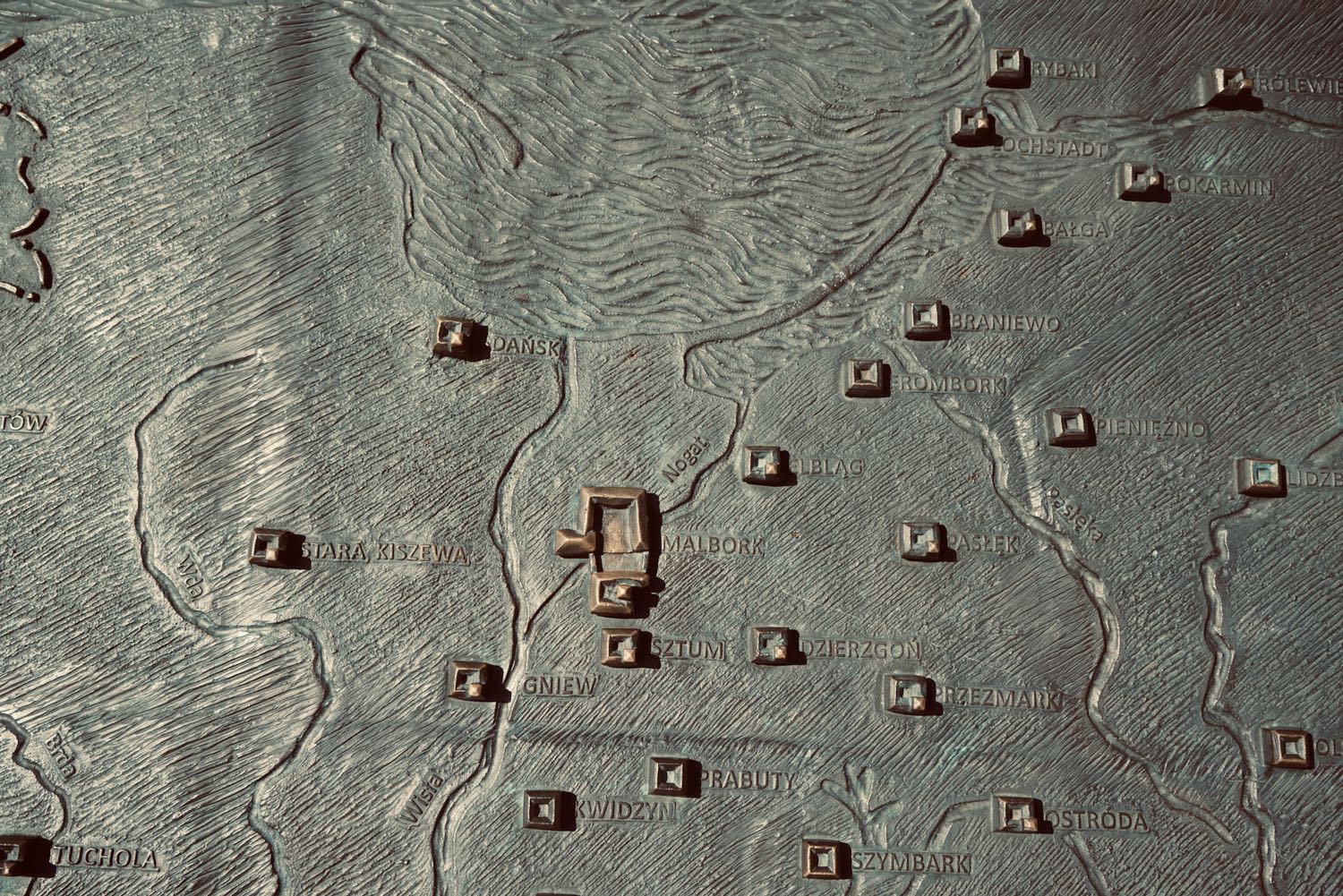
One fascinating part for me, as I walked through the gates, towers, and halls was hearing about how the castle, although laid siege to by many different armies, was never once taken by force.
Finally, to gain control of the castle, the Polish kingdom simply paid the mercenaries, who were helping the Order to defend the castle, to leave. It wasn't long after that the castle was sold to King Casimir IV of Poland.
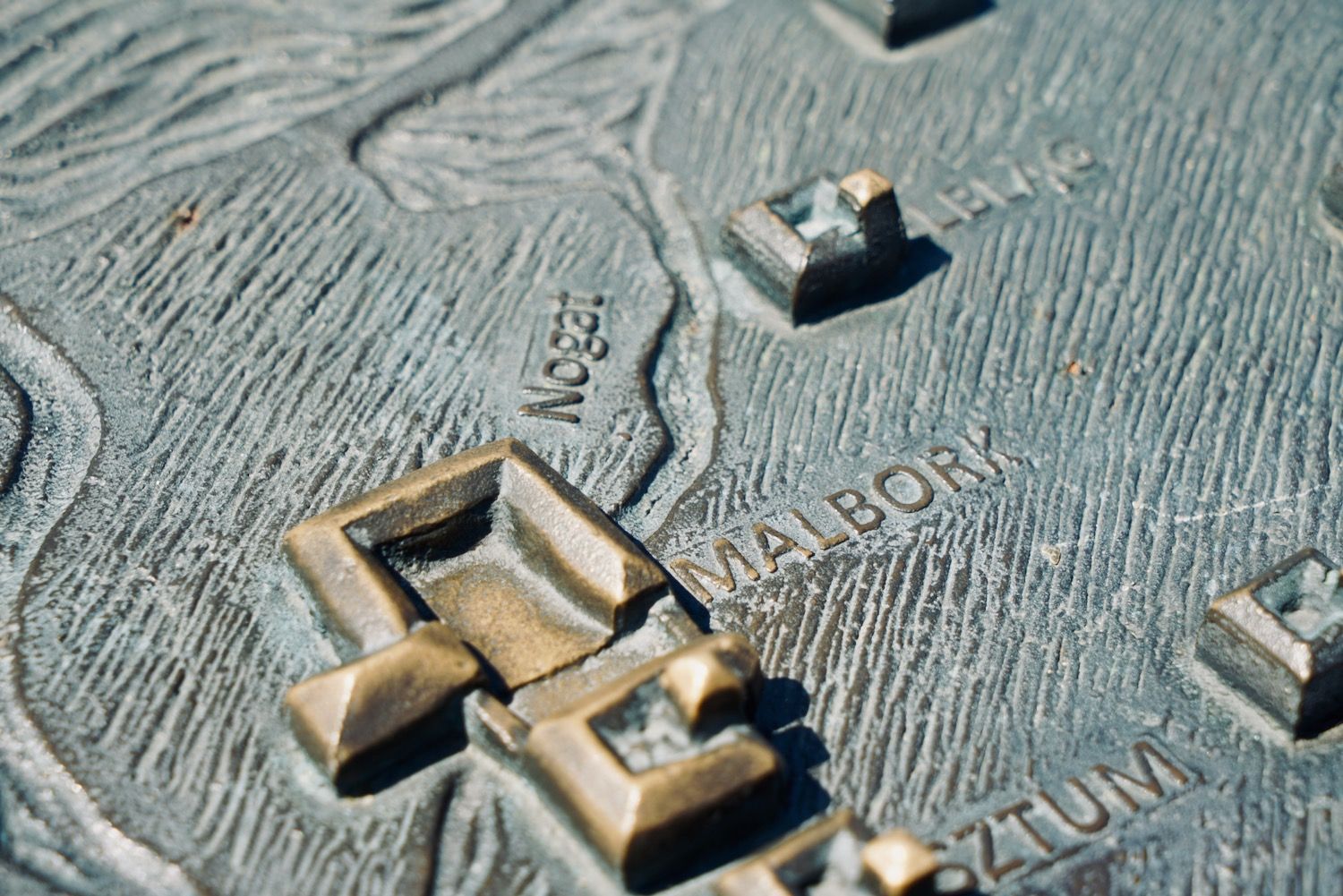
As part of the Polish kingdom, the castle was used as various Polish royal residences and courts for some 300 years - twice as long as the Teutonic Order controlled it. However, this period was interrupted sometimes by foreign occupations from Sweden until the eventual partition of Poland itself by Russia, Prussia, and Austria.
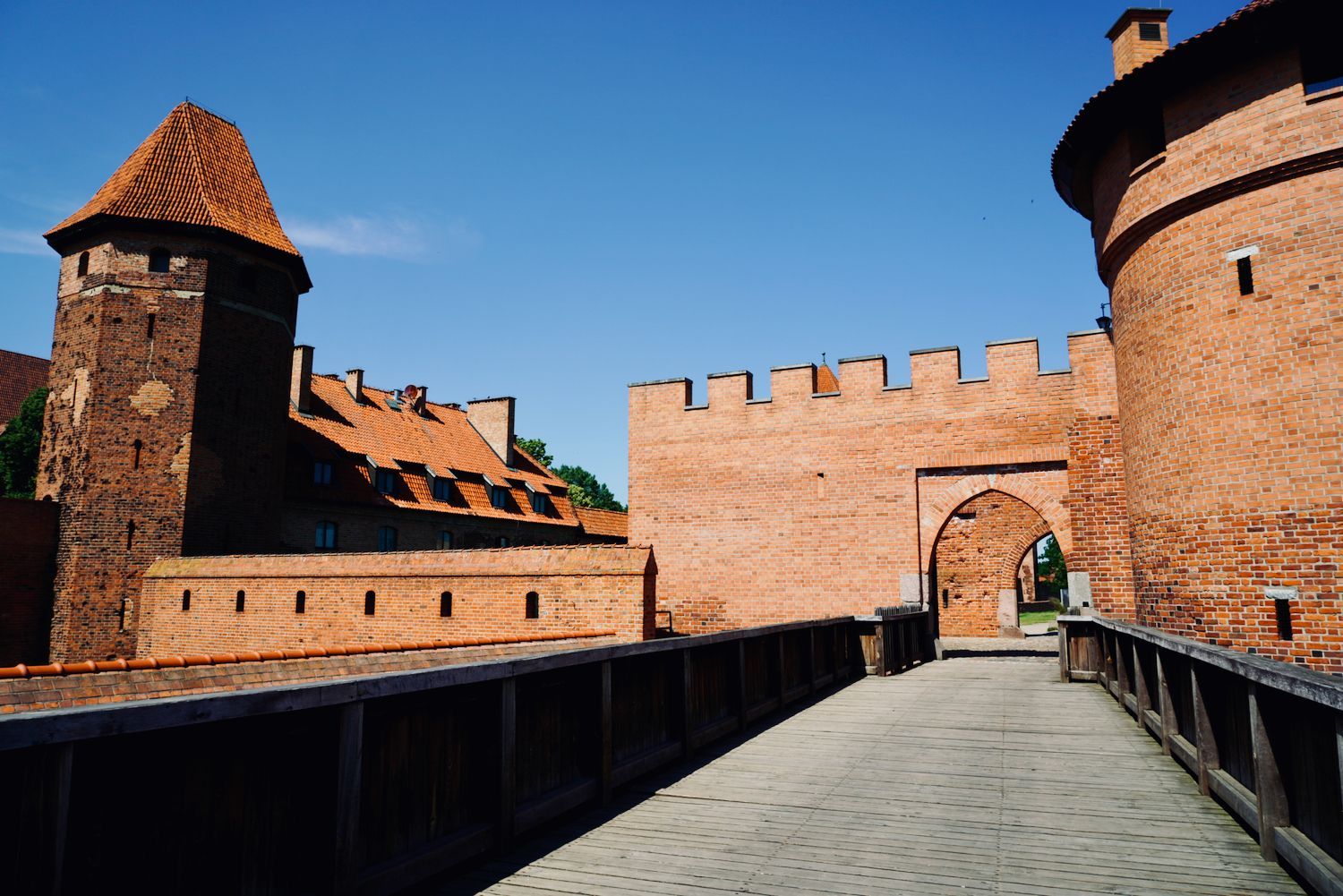
Through the Gates
Before arriving, I didn't know anything about Malbork or the history of the region and knights that built it. I also didn't know how big and impressive the buildings and grounds would be. I was expecting a pleasant day trip from Toruń, but it turned into an impressive and expansive trip through history.
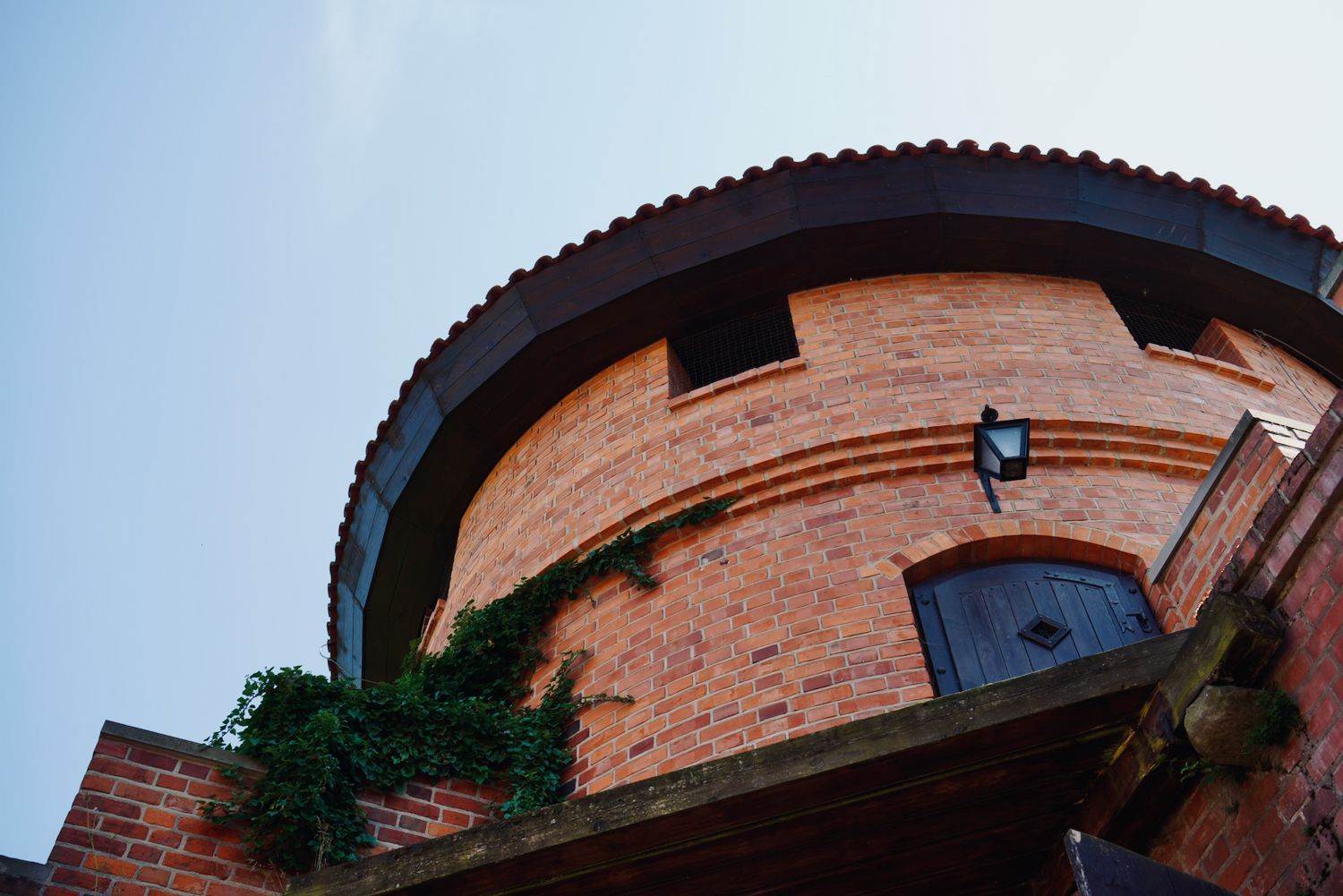
I donned my headphones, adjusted my mask – that was already getting uncomfortable – and turned right from the ticket office and headed over the wooden bridge. Right away it was great to have the audio guide telling me about the gates and some of the history.
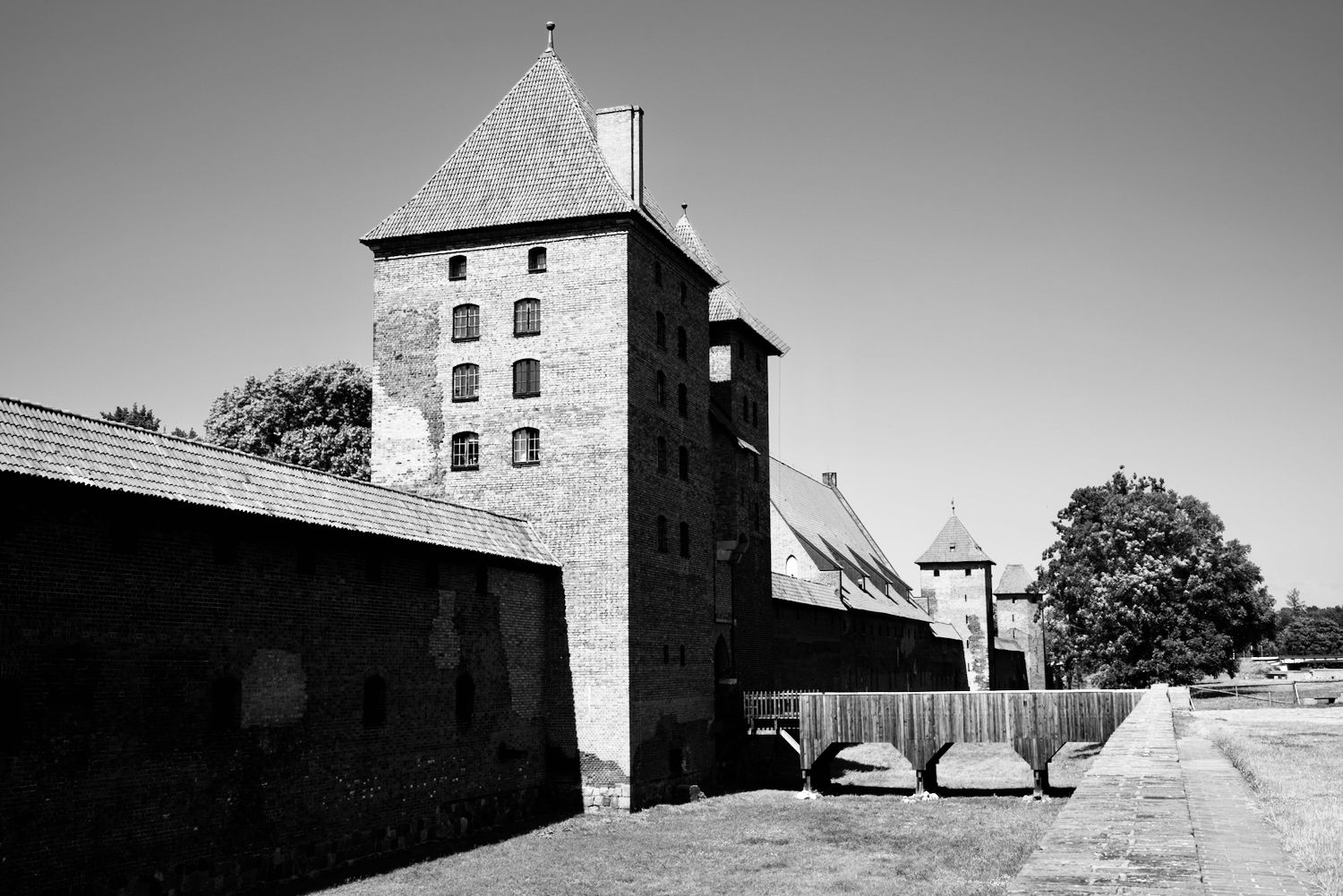
Patches of History
As I passed through the gates and crossed the bridges, I noticed the many layers and patches of different looking bricks. And you might see the discolouration for yourself on the next few pictures.
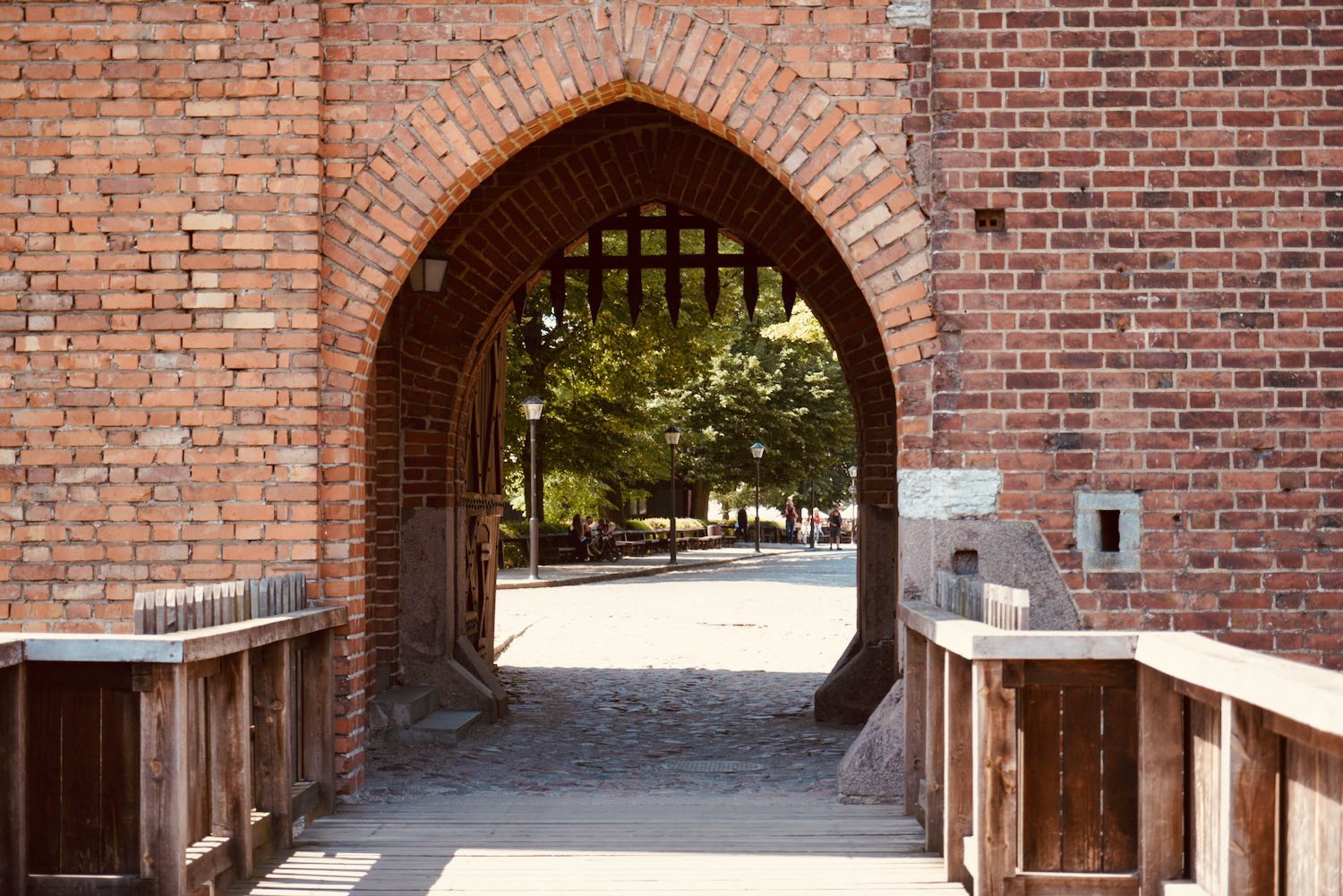
This is a common sight on many of Poland's historical treasures that, unfortunately, resulted from the decades of war and occupation of World War II. For Malbork, there has been a herculean effort to restore and preserve the castle to what it once was.
There were efforts before the world wars to restore the castle, but most of the modern restoration efforts didn't begin until the 1960s. The last major restoration was the castle church, which was completed in 2016. The church had been restored before WWII but was again destroyed during the war.
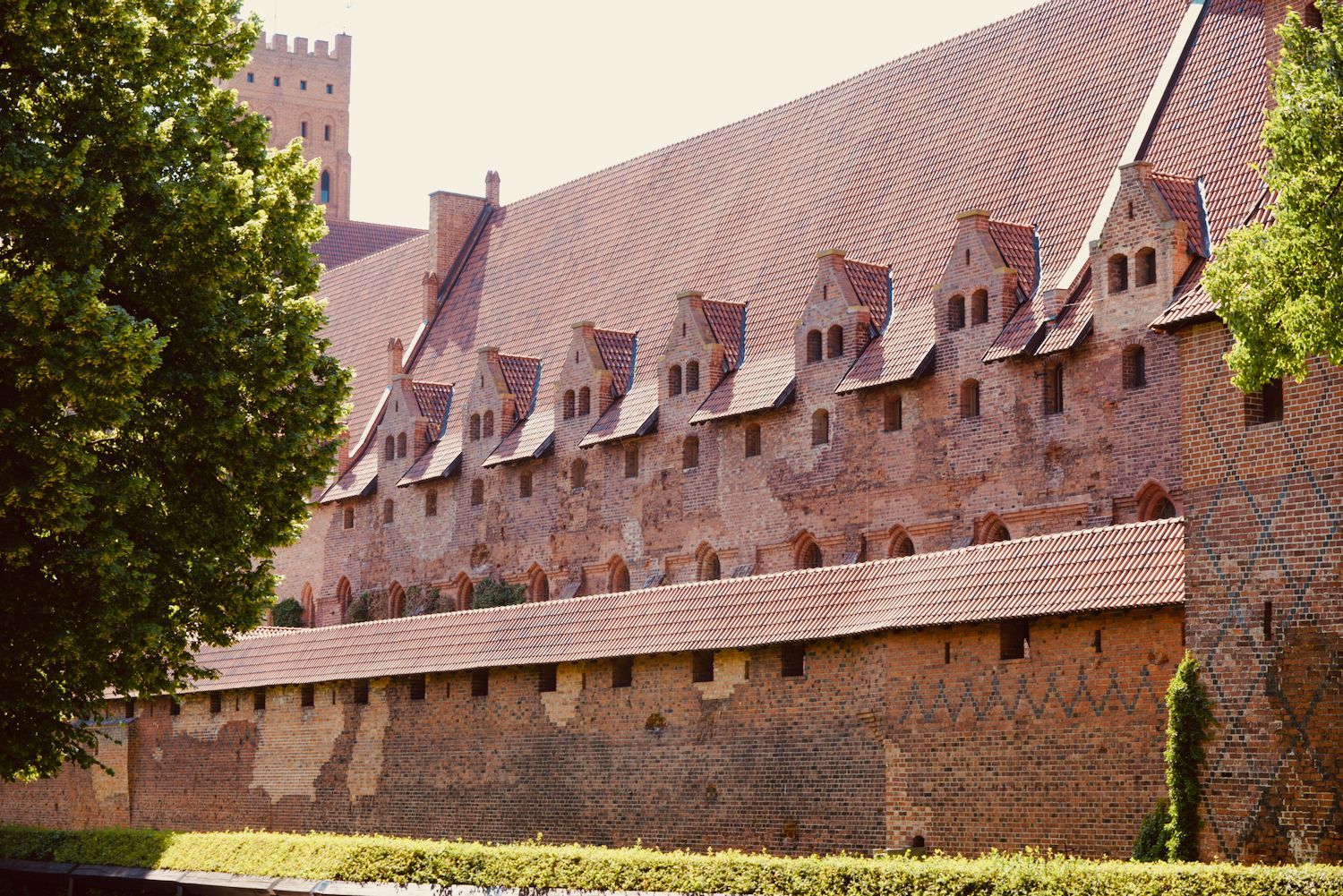
Continuing the Tour
After this gate and bridge, I passed into the area where the old workhouses and stables for the castle were. But they weren't really part of my a audio guide tour, so I continued onward with the prompts and headed to the next gate that leads to the main courtyard of the castle.
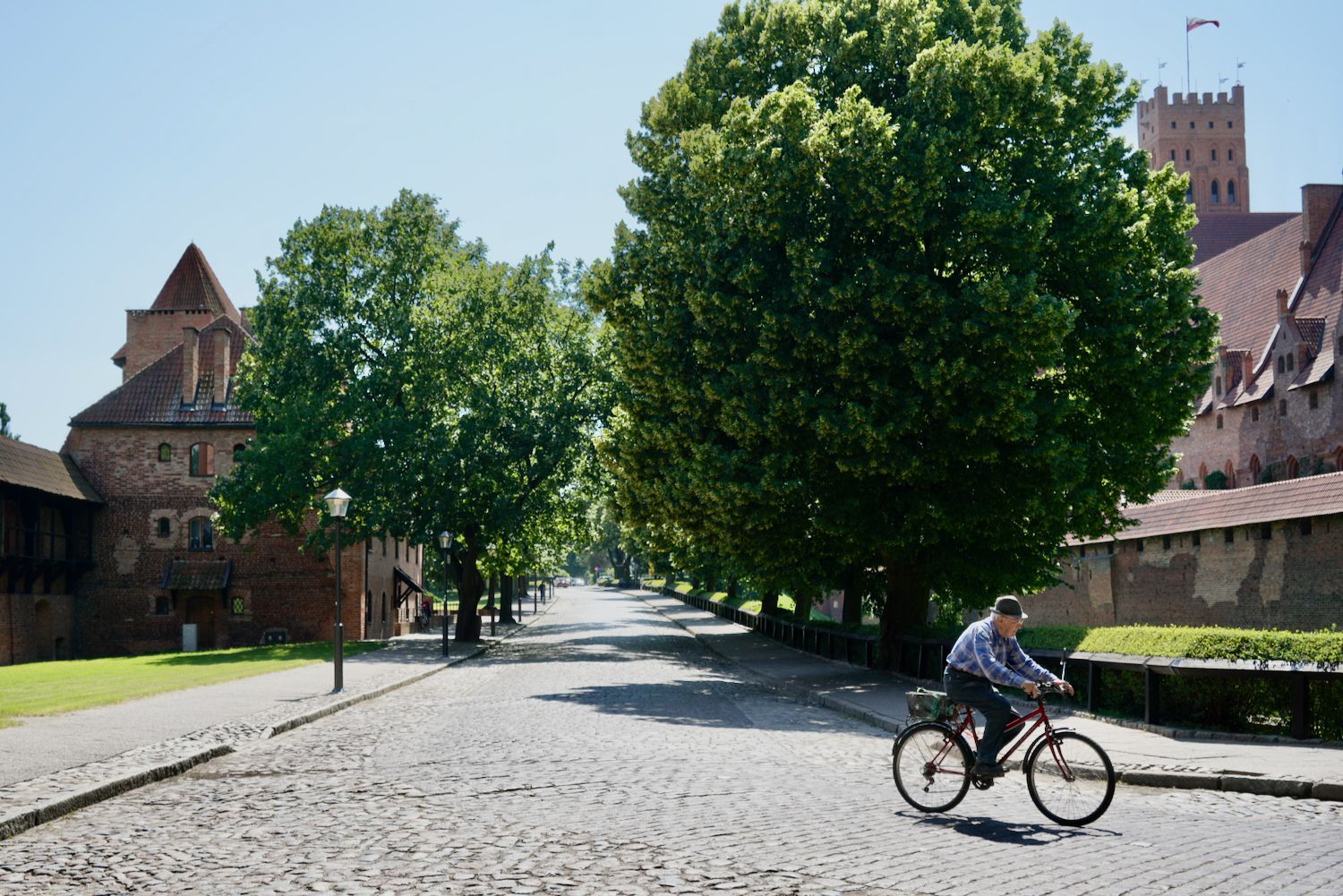
Modern Guards at the Gates
The next gate I got to was the one where I had to actually show a ticket to enter. It was here that the realities of travelling during Covid-19 became more real as well. Two men stood as I approached the gate, both wearing face shields, masks, and rubber gloves.
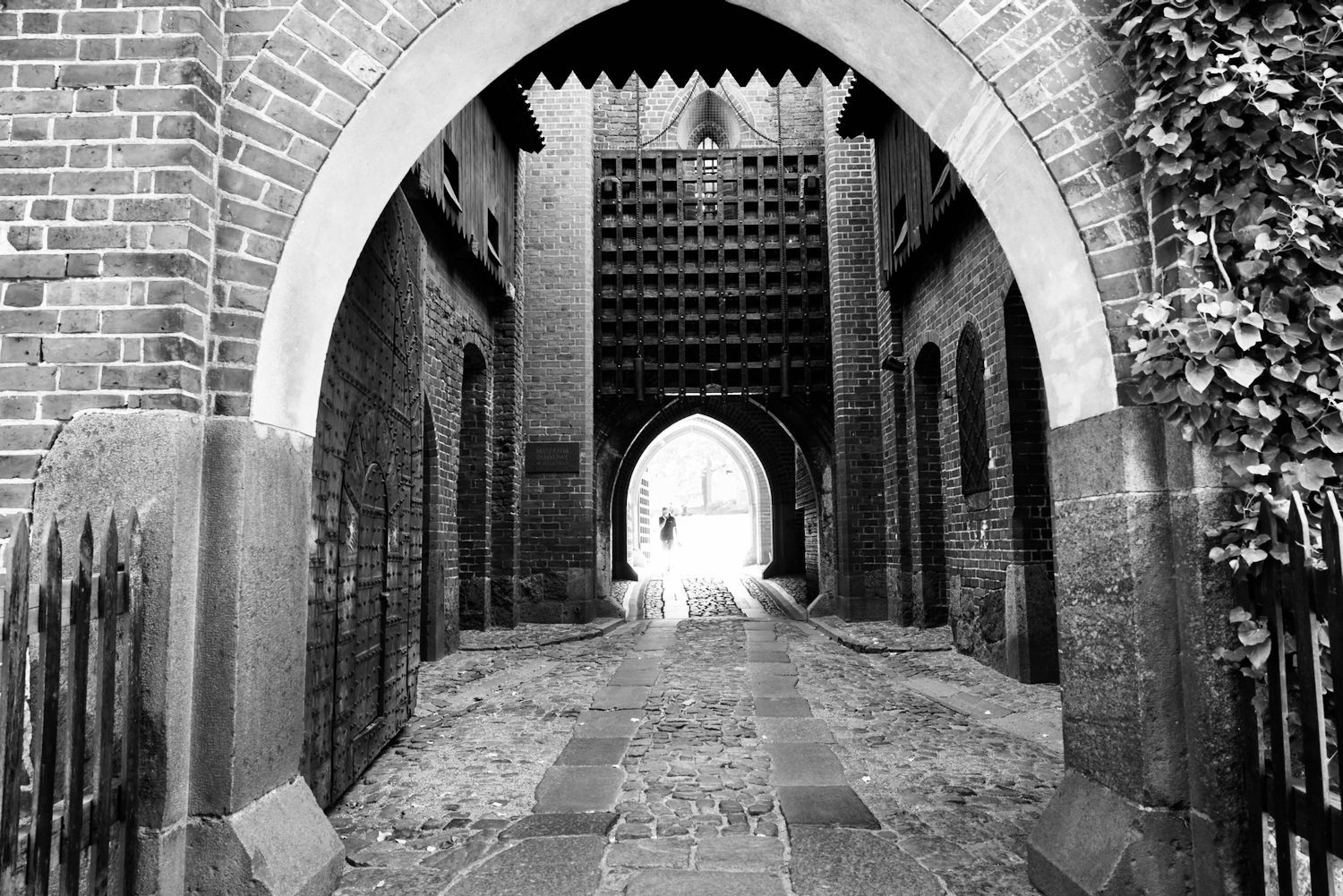
They asked (in Polish) for my tickets, and also that they need to check my temperature. They pulled out their laser thermometer and checked my forehead. I had been wondering how travelling during the pandemic would be – and with how quickly things are changing, it's not exactly clear how things will be going forward – but it was simple enough and it's nice to see places opening up but also being careful and taking precautions.
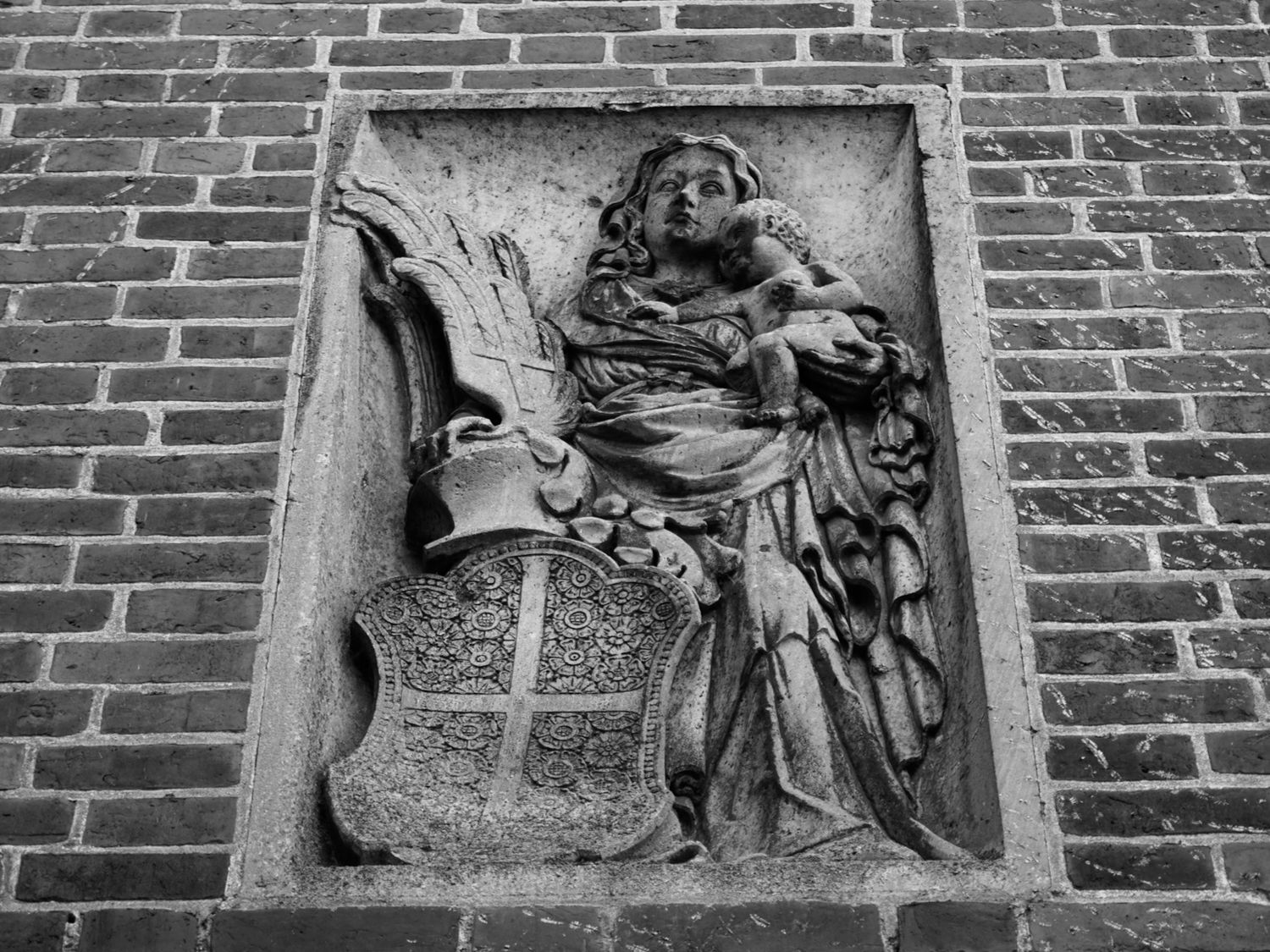
It sort of took me back in time for a brief moment, to what it might have been like during the times of the plague in Europe. A traveller or dignitary arriving to the castle, needing to see the king or offices and being stopped and checked for disease or infection.
I thanked the guards (dziękujemy!) and continued through the gates into the main courtyard.
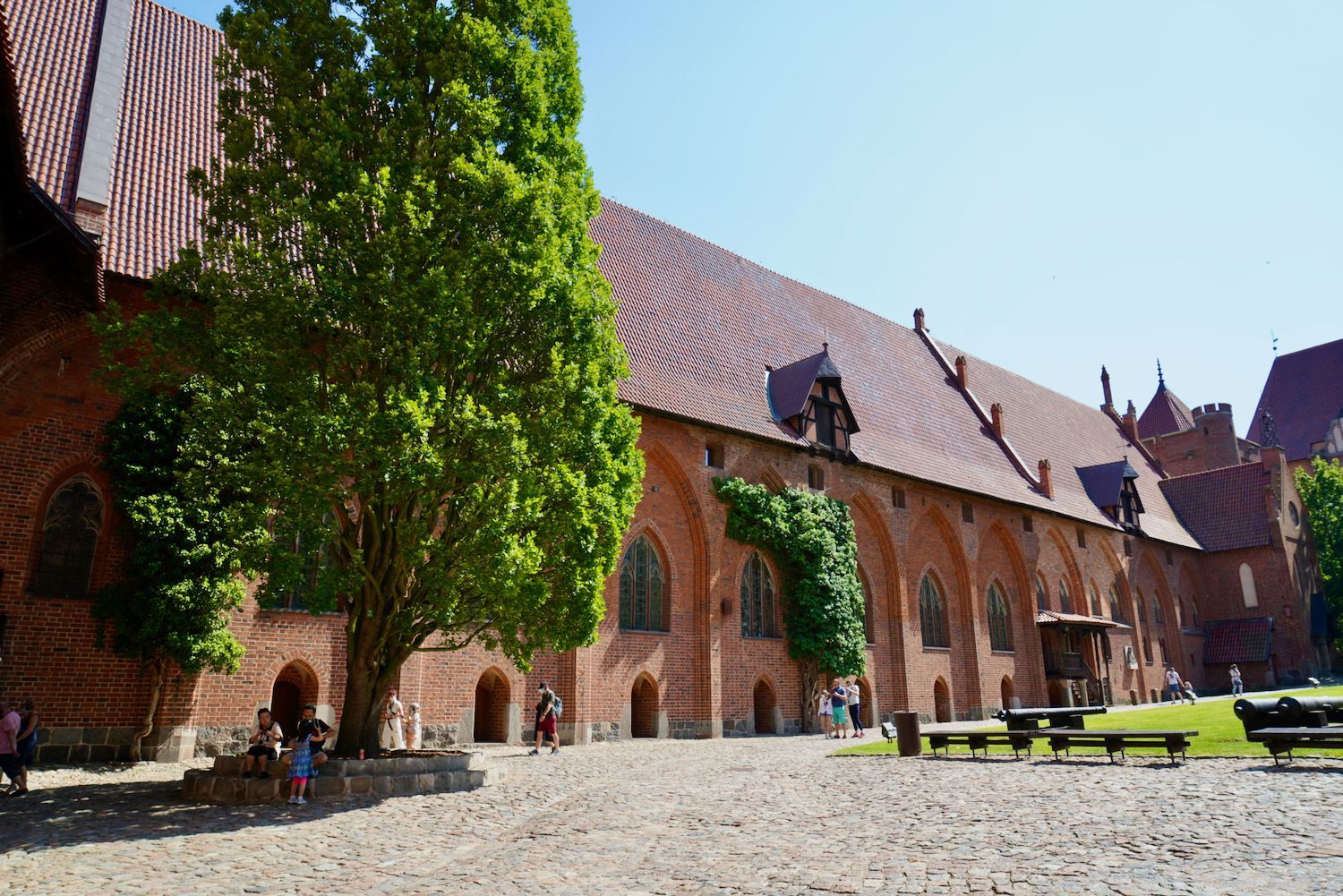
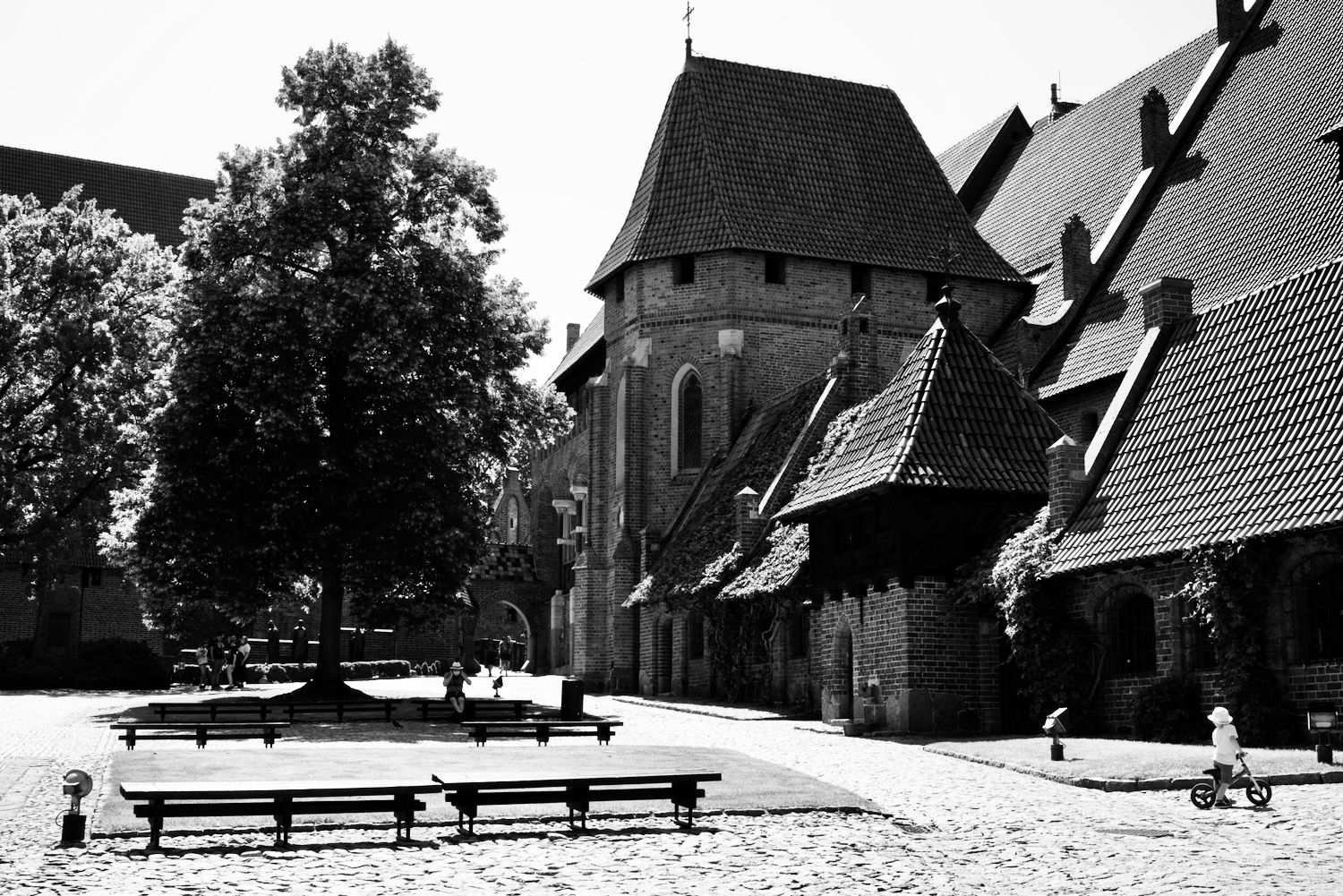
From the main courtyard, the audio guide took me on this great journey in and out of the many buildings that line the edges. What at first looked like random, small doorways, would turn out to lead to an amazing labyrinth of exhibits, architecture, and history – all with a pleasant voice in my ear explaining everything as I went along.
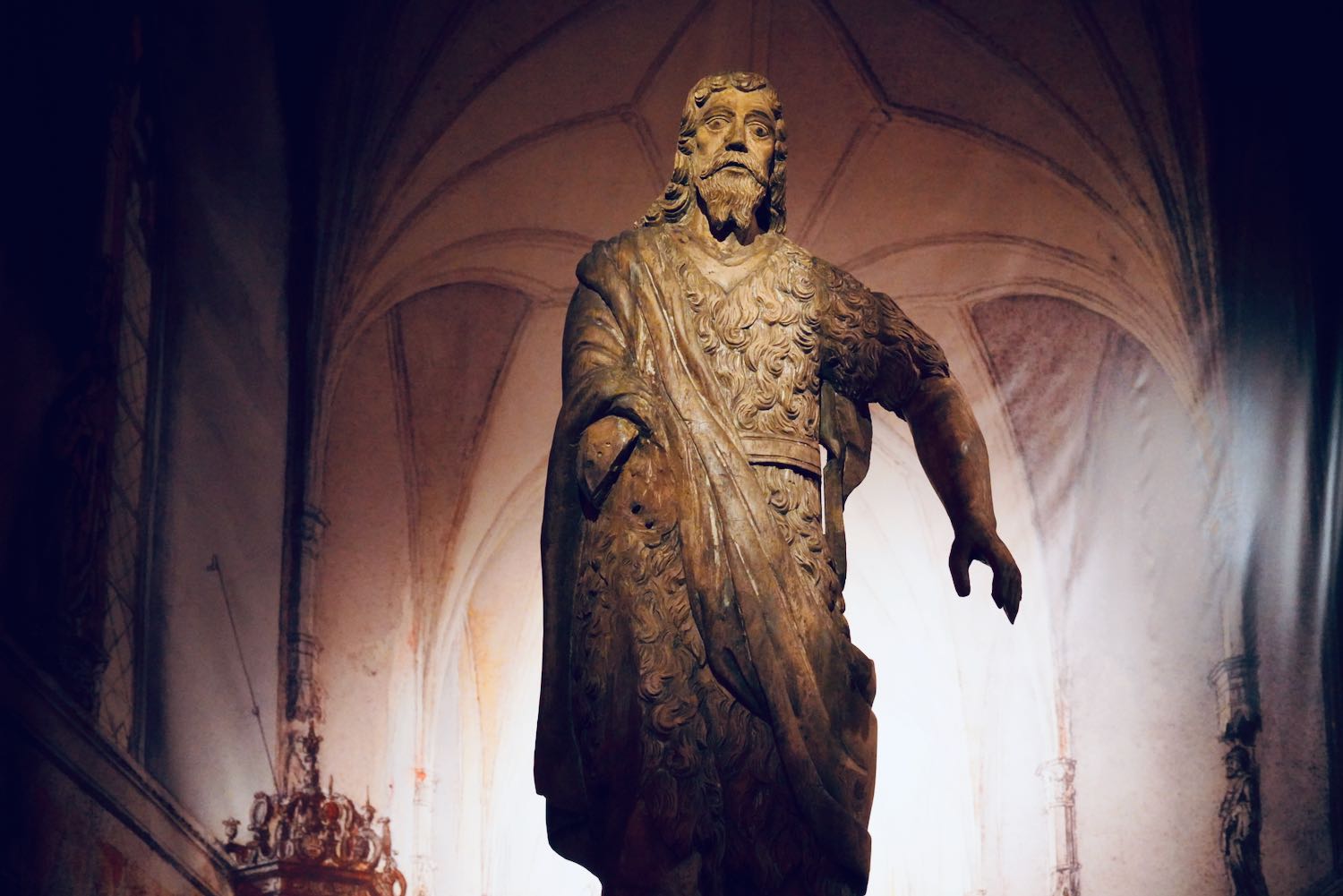
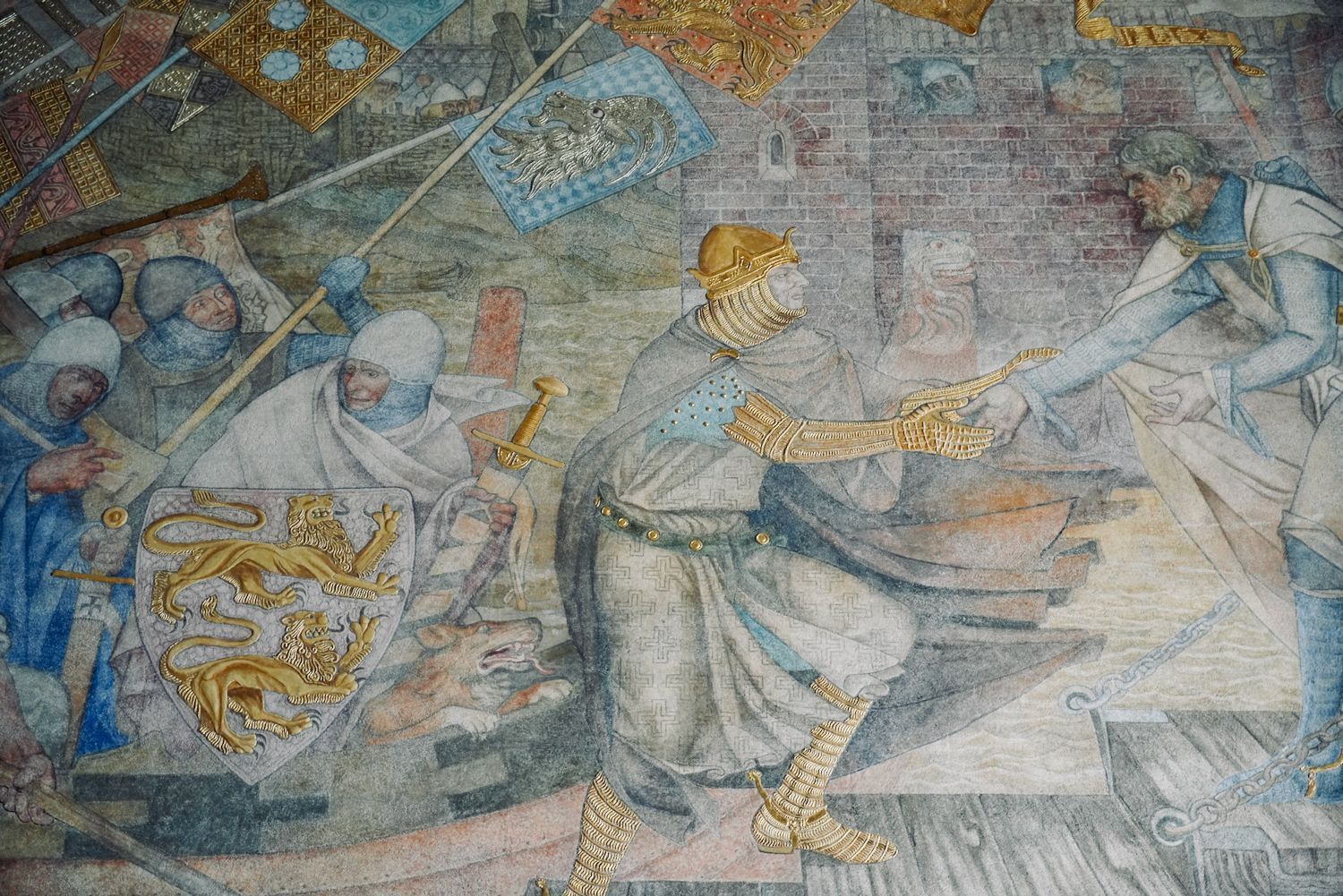
After working my way through a number of the passageways and exhibits, I found myself lingering and wanting to stay in one room in particular; this was perhaps my favourite room in the castle.
It was hard to capture the majesty of the room with my camera, it was bright and rich and calm. It felt almost cathedral like. I wish I had had my wider lens with me, it would have done a better job of capturing the atmosphere of the room.
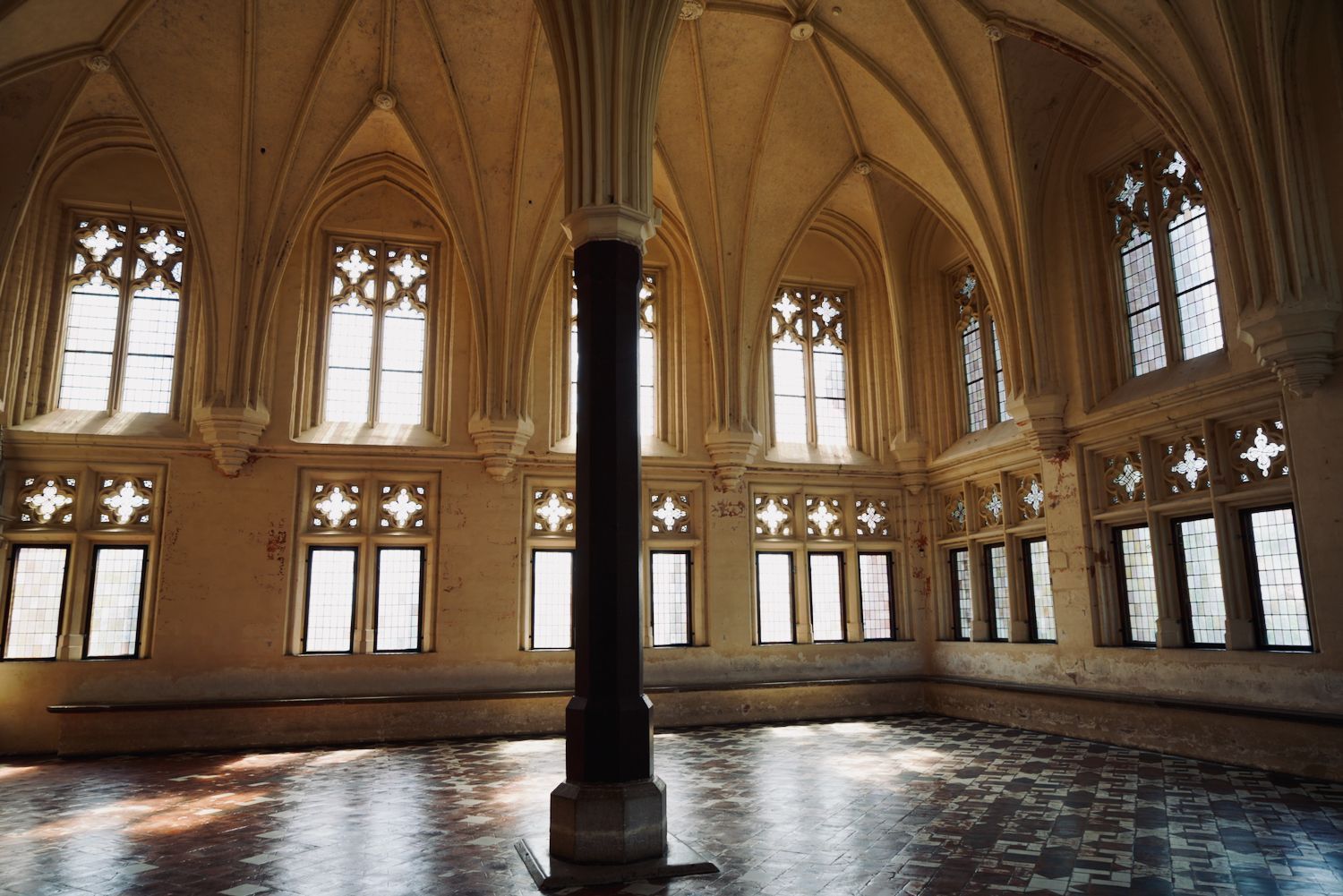
Along three of the walls were stone benches built into the walls. In the centre, a single pillar taking all the weight of the vaulted ceiling. On the fourth wall was a large hearth that would have been wonderful to see lit and filling the room with firelight and warmth. And above the fireplace, embedded into the wall, was a cannon ball.
The story was – as the audio guide explained – that during a particular battle to siege the castle, the enemy launched cannon balls through the windows, aiming to take down the central support pillar. None of them hit their mark, thankfully! And as a commemoration the steward at the time had one of the cannon balls set into the wall.
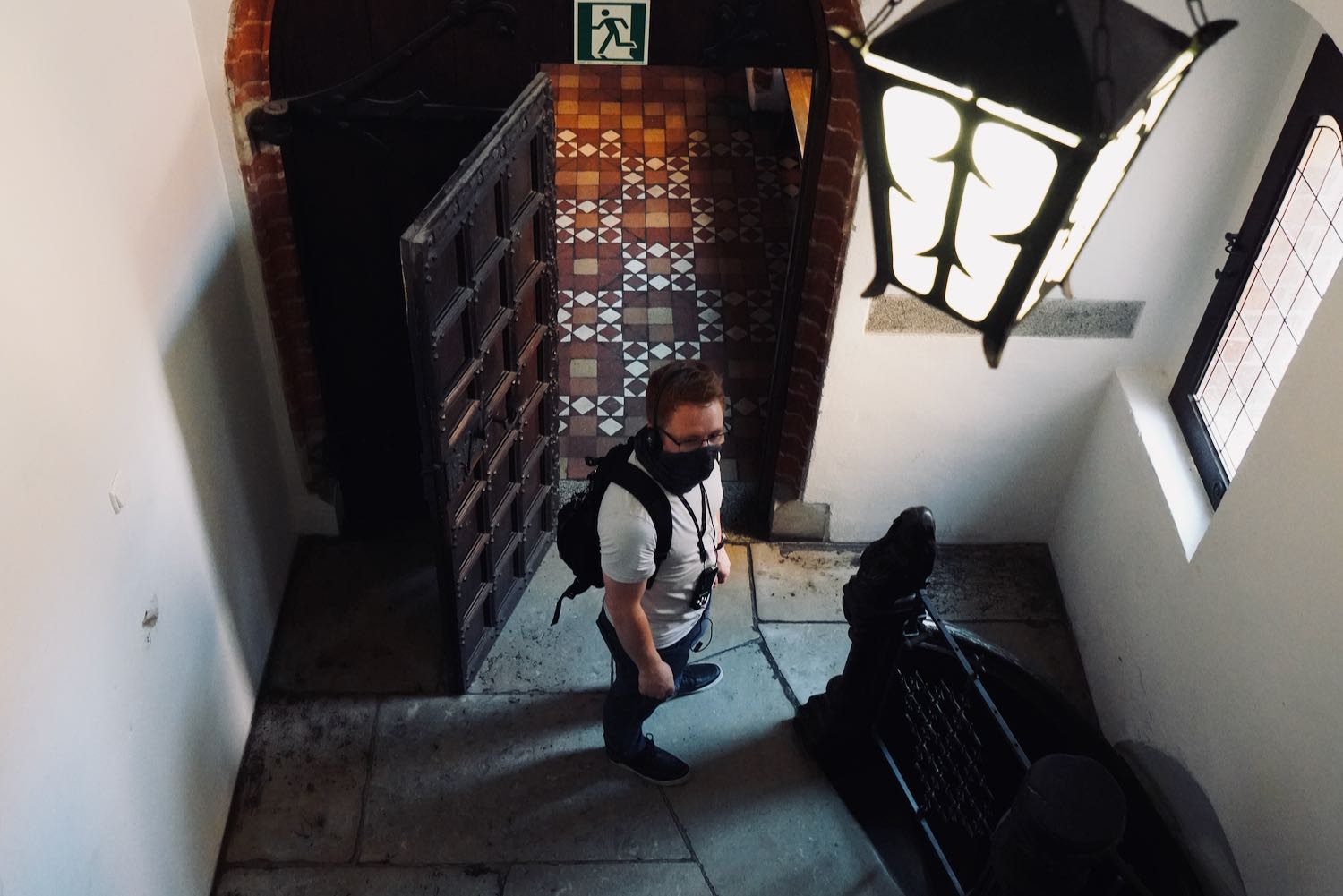
I continued on through more halls and rooms, eventually ending up back into those first main grounds. It was here that the audio guide said that it'd probably be a good time to take a break and get a drink or lunch. It was a great idea! But unfortunately there wasn't much open at the time because of COVID-19 restrictions.
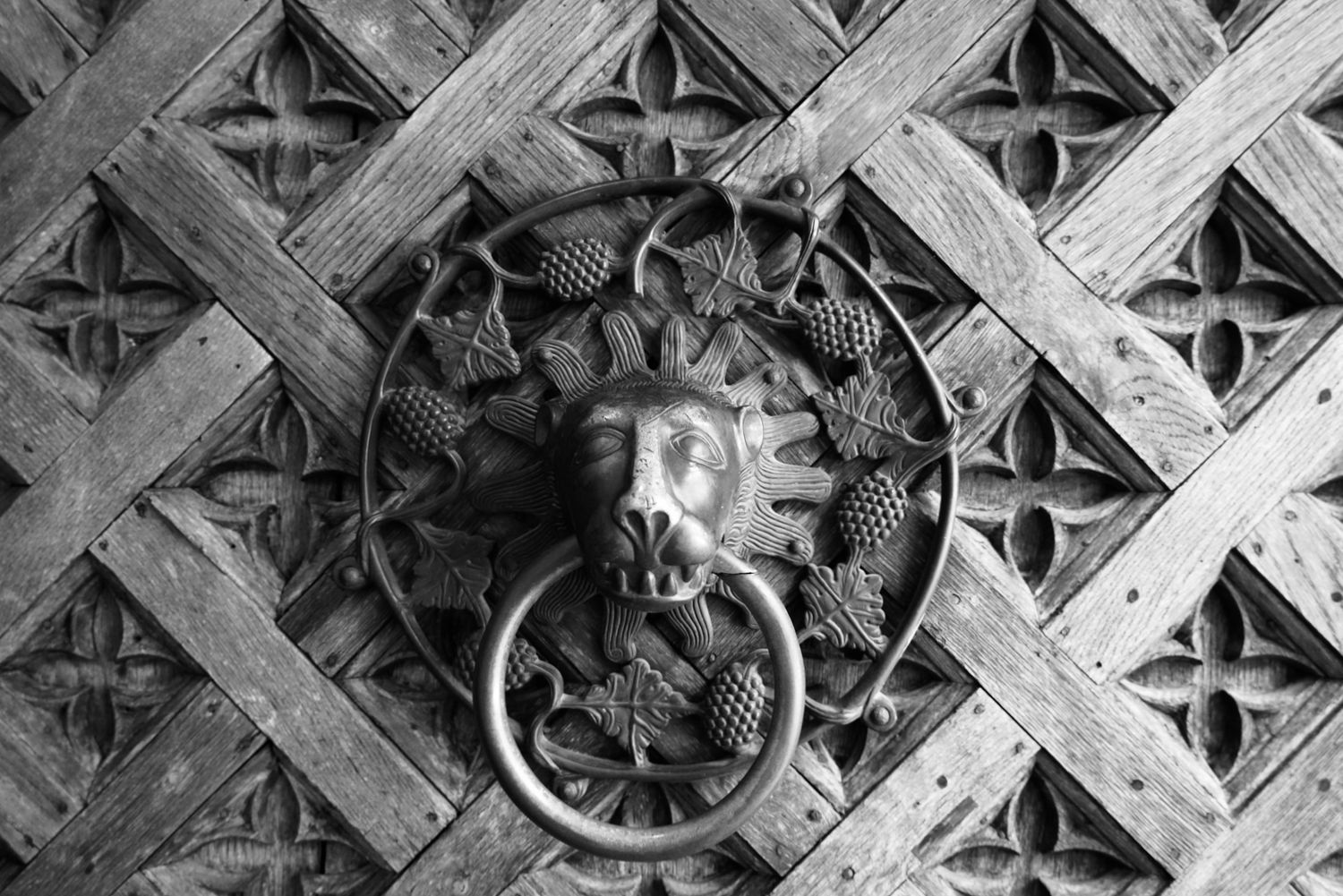
There are nice trees and benches to just relax, people-watch, and take in the atmosphere of the castle grounds. Luckily I had brought some water, so I decided to take a rest. I found some shade under one of the large trees and removed my mask, and audio guide. It was a relief to get the mask off, even for a short time.
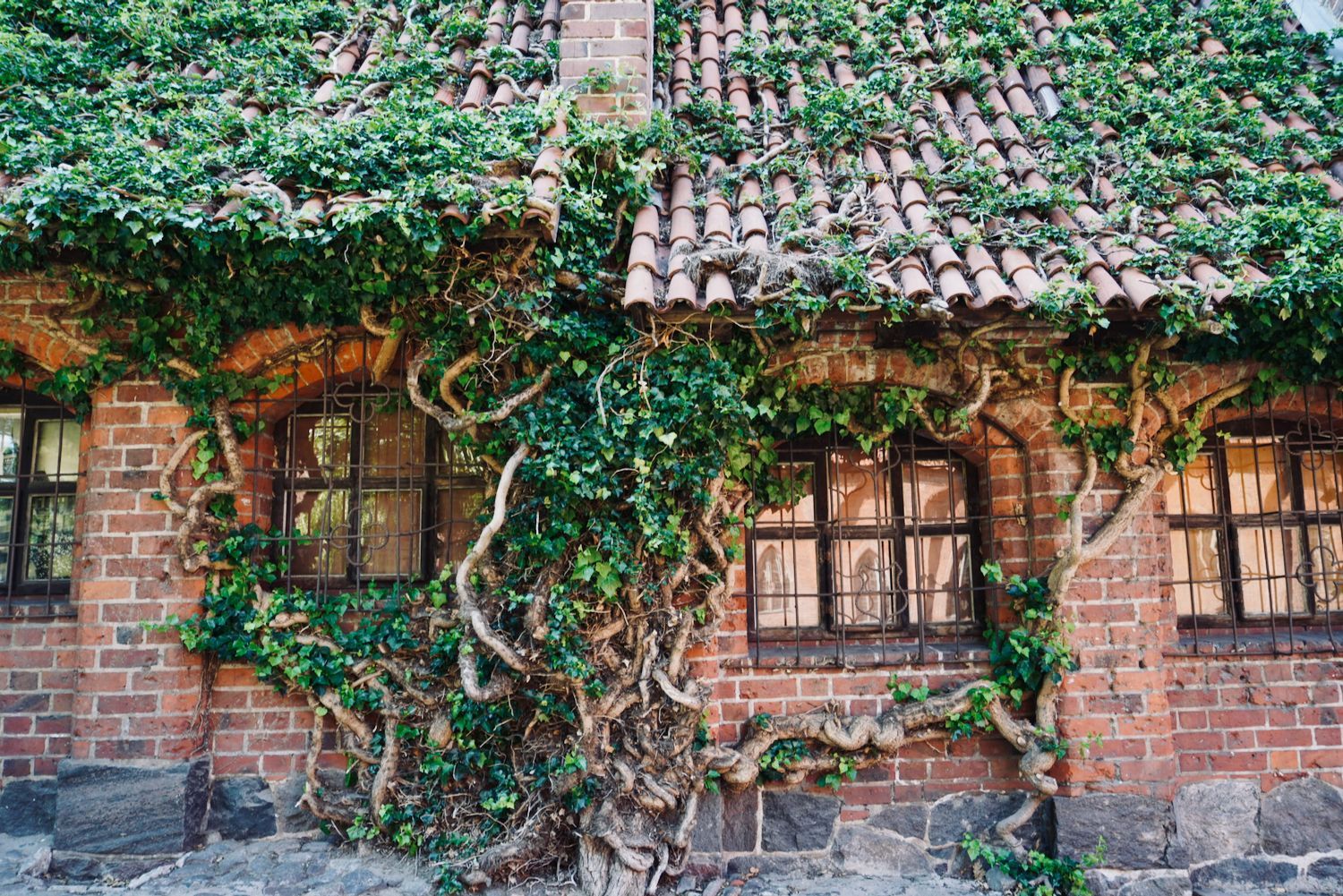
The Upper Castle
After I felt rested, I continued onto the next stage of the castle. From the main grounds you cross another bridge and gate to get to the main upper castle. This is the area where the primary and most important parts of the castle are – and also the strongest fortifications. It's here where you will find the main kitchens, treasury, tower, and church.
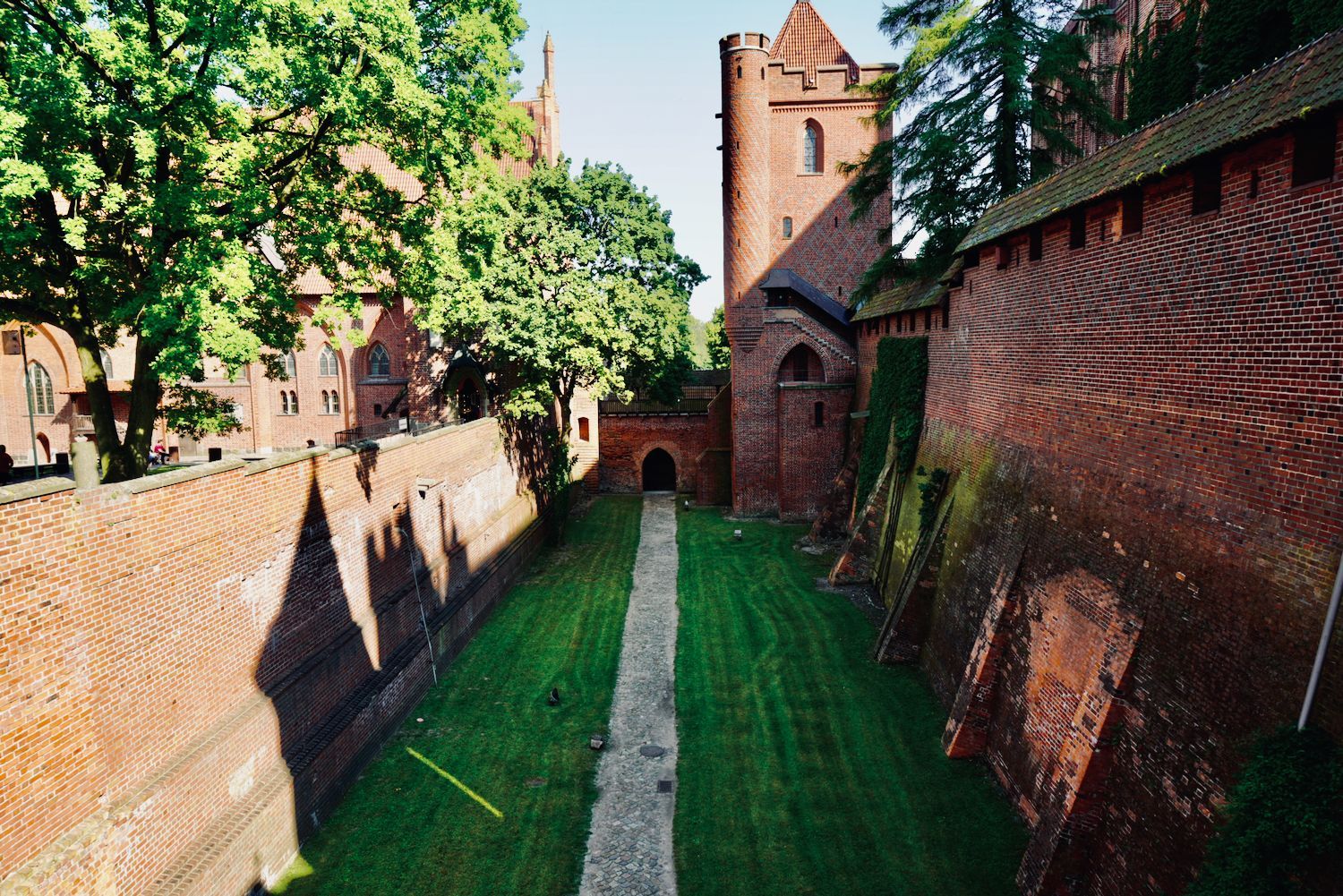
After crossing the bridge to the upper castle, I ended up between two gates. And here the audio guide directed me to go left, instead of straight to the upper castle. It was worth following, because it led to a wonderful walk outside, around the walls of the upper castle.
I found it calm and relaxing at this point to wander through the parks and gardens that line the tall castle walls. I noticed too that there were fewer people here compared to the other spaces too. It was probably because not everyone uses the audio guide, so they wouldn't have made the detour around like it describes.
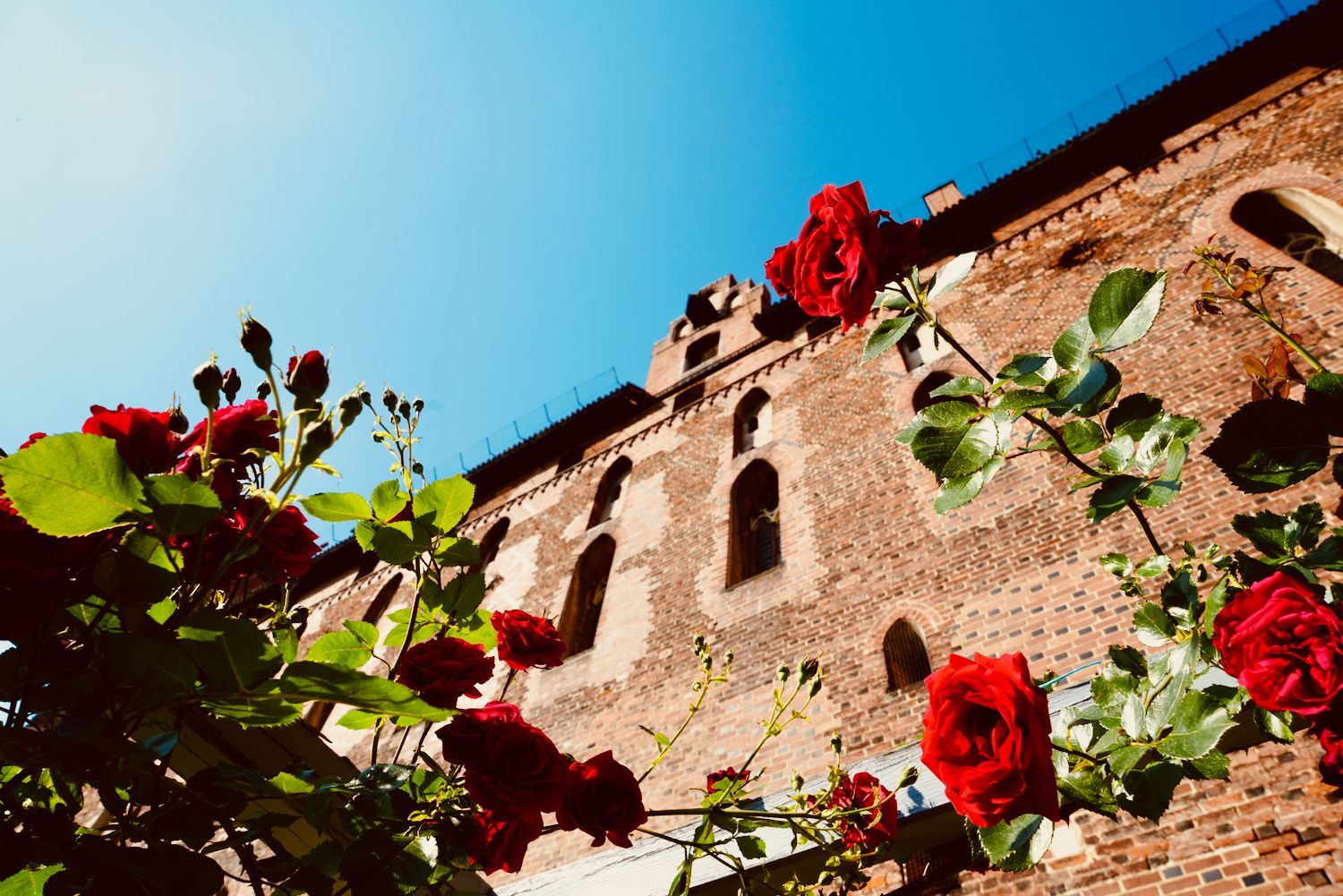
So thankfully, being able to wander peacefully through this beautiful rose garden with not another person in sight was something special.

After following the gardens around the upper walls, I ended up back at the bridge and gates of the upper castle. So I turned right, and continued on. And on cue, the man in my ear began to describe the upper castle, the kitchens, the treasury, the towers, and more.
Unfortunately, at the time of writing this (July 2020), access to the tower is restricted and off limits because of the pandemic. The very small stairways and small spaces at the top are considered too high of a risk for transmission, so I couldn't go up. But I imagine in normal times it would be a true highlight to get up high and get a lay of the land and a view of the old town of Malbork close by!
However, I was able to take in another favourite space of mine: the newly restored church.
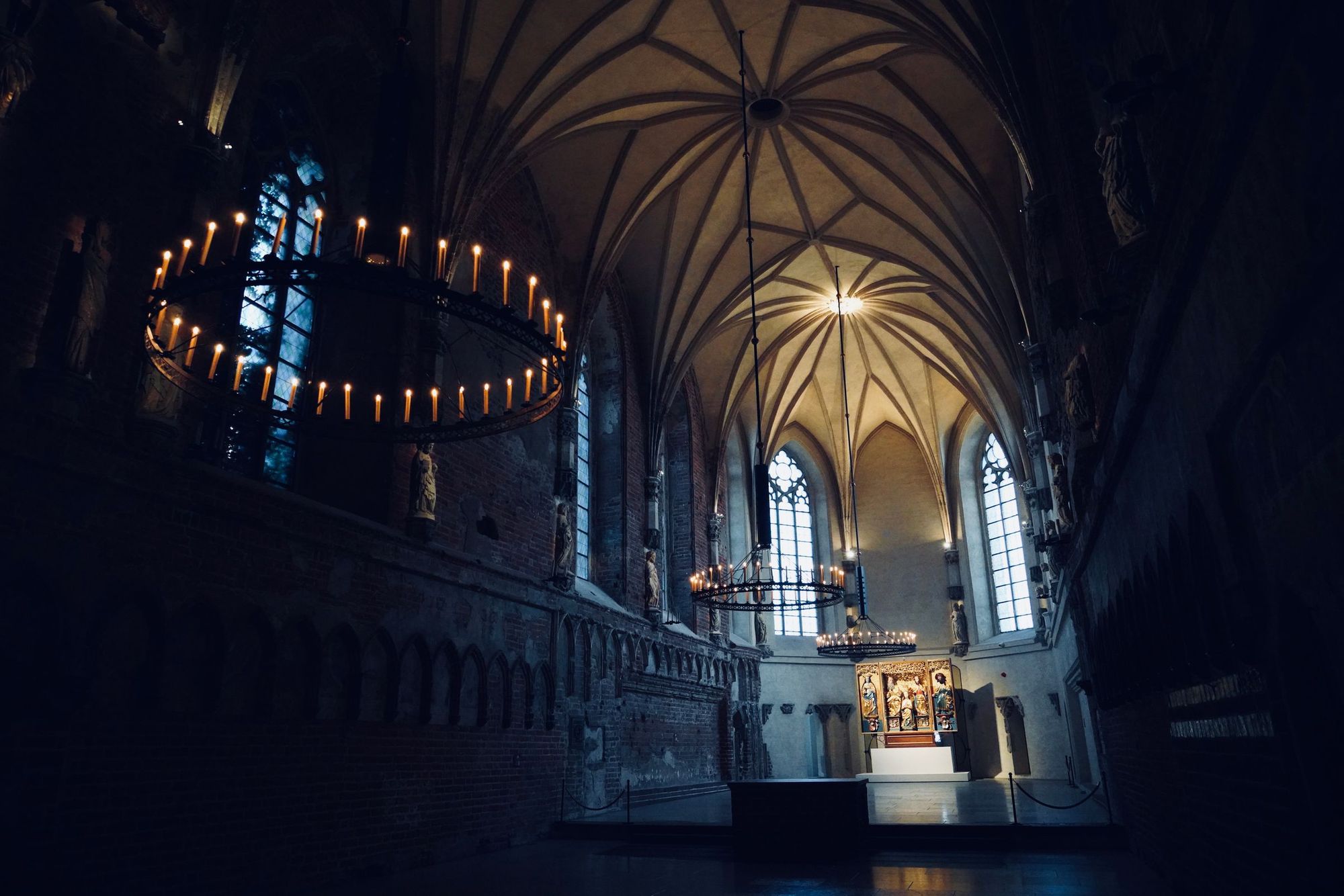
The Castle Church
Restored twice – before and after World War II – the church of Malbork castle is a wonderful space to take in. It was completed in 2016 to it's current state. As you can see in the above photograph, the effort to create an authentic restoration of the church, while still honouring the heritage and history, was successful.
If you take a closer look, you can see areas of plaster and whitewash in contrast to raw bricks. The bricks you see are the original church that was still standing after WWII and the plaster areas are the newly created portions. So as you can see, huge portions had been destroyed in the war, including the entire ceiling – which all had to be masterfully recreated.
Winding Down
After the church there were a few more small rooms and halls that were all very nice, but the tour in my ear was mostly over at this point. And after spending about 4 hours wandering through the castle, I was starting to feel finished for the day. So I began working my way to the end of the tour.
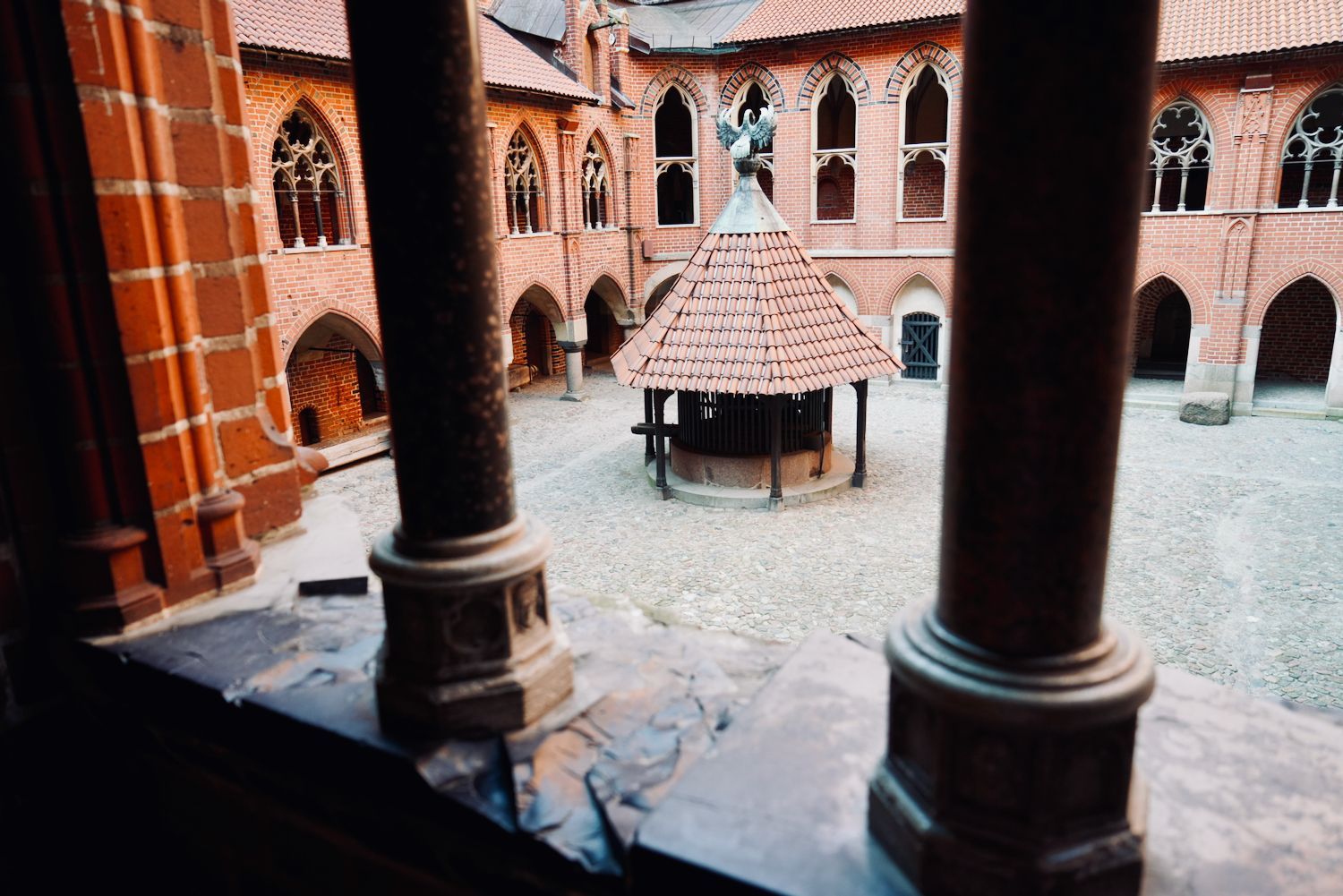
After navigating down a number of stairways and passageways, I ended up back in the courtyard of the upper castle. I headed back through the gates and over the bridge, back to the castle grounds from the start.
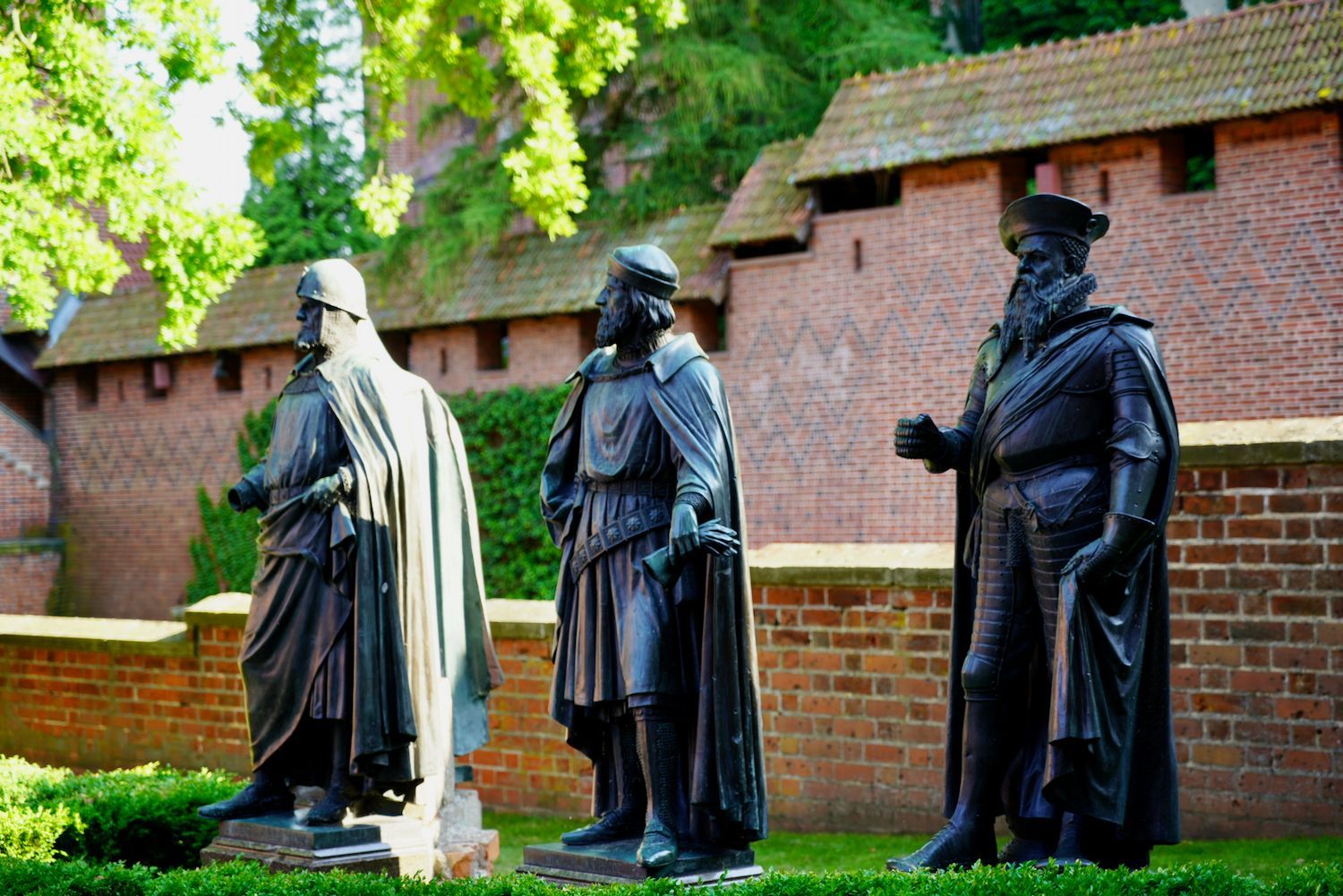
From the main grounds, I took in the view one last time and headed for the exit. And of course you have to pass through a couple gift shops, but they were nice and worth having a look at if you are interested in the history of Poland and castles in particular.
After the gift shops, I ended up outside once again, this time below the bridge to the upper castle.
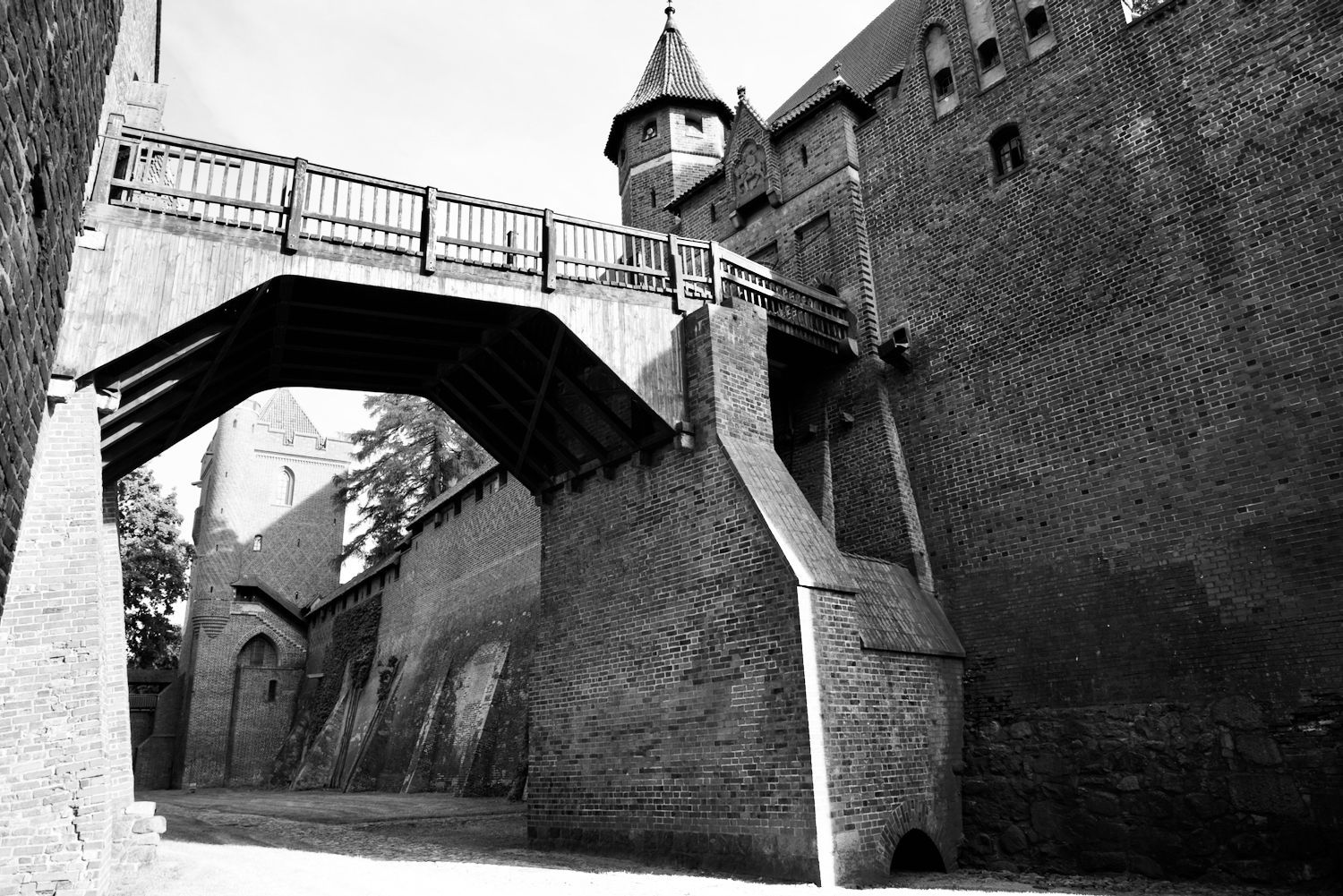
It was a great way to finish the tour! I took off my headset – and also my mask for a moment to get some fresh air! – and put the audio guide in a bin that's stationed in a small tent not far, just around the corner.
I followed the wall a bit farther, looking for the way back to the parking lot, but I found I was actually right near the edge of the river. And I'm glad I was, because there is a small walking bridge that leads across the river; and it's here that you can get that iconic shot of Malbork Castle.
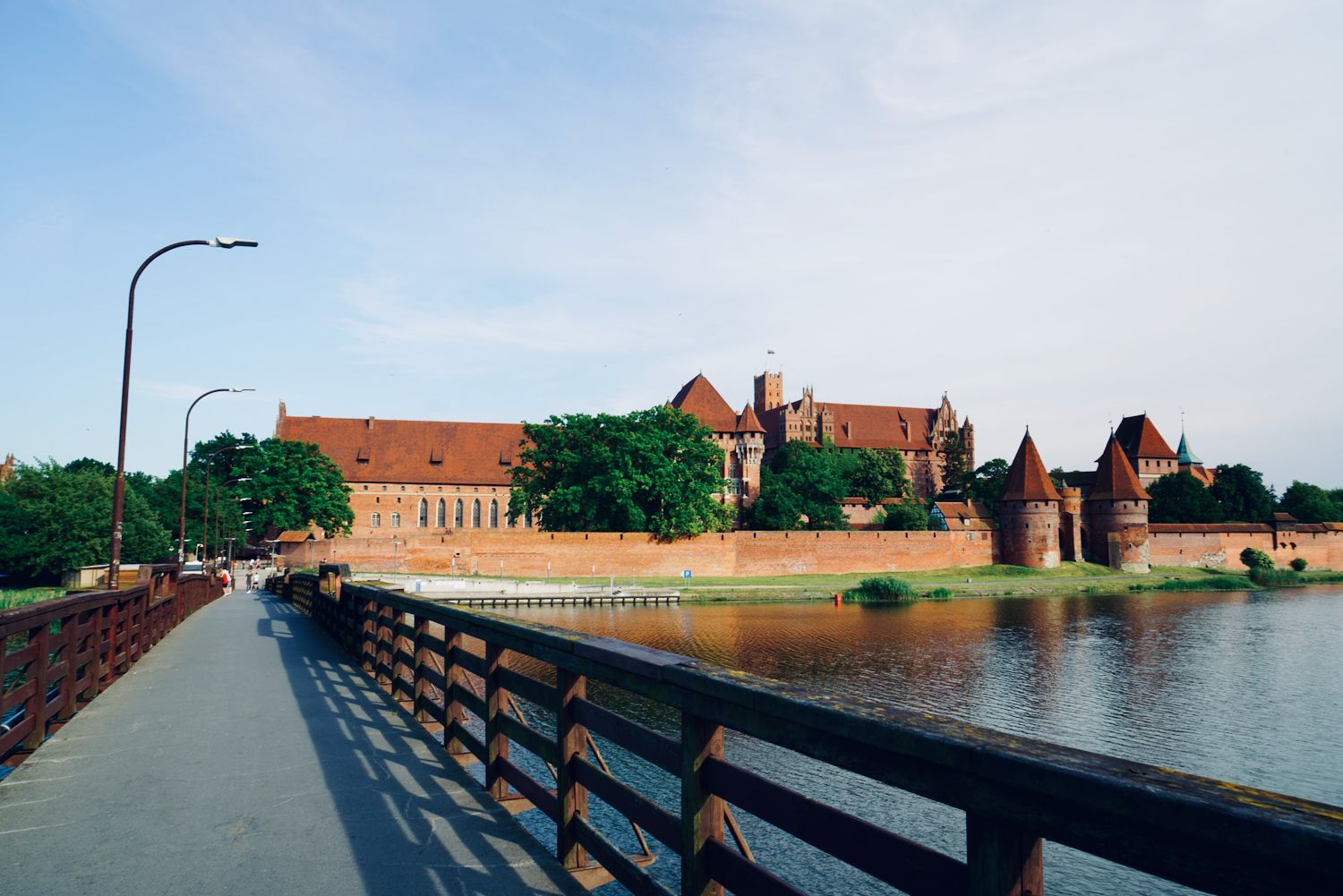
In the end, I spent about 5 hours exploring the castle and grounds, and for me this was a good length of time. But if you are a history buff or just love exploring old castles, I'd recommend bringing a packed lunch and water and making a full day of it, so that you can take in all of the exhibits – full of medieval armour, weapons, and artefacts. There is also a really wonderful exhibition of amber from the region!
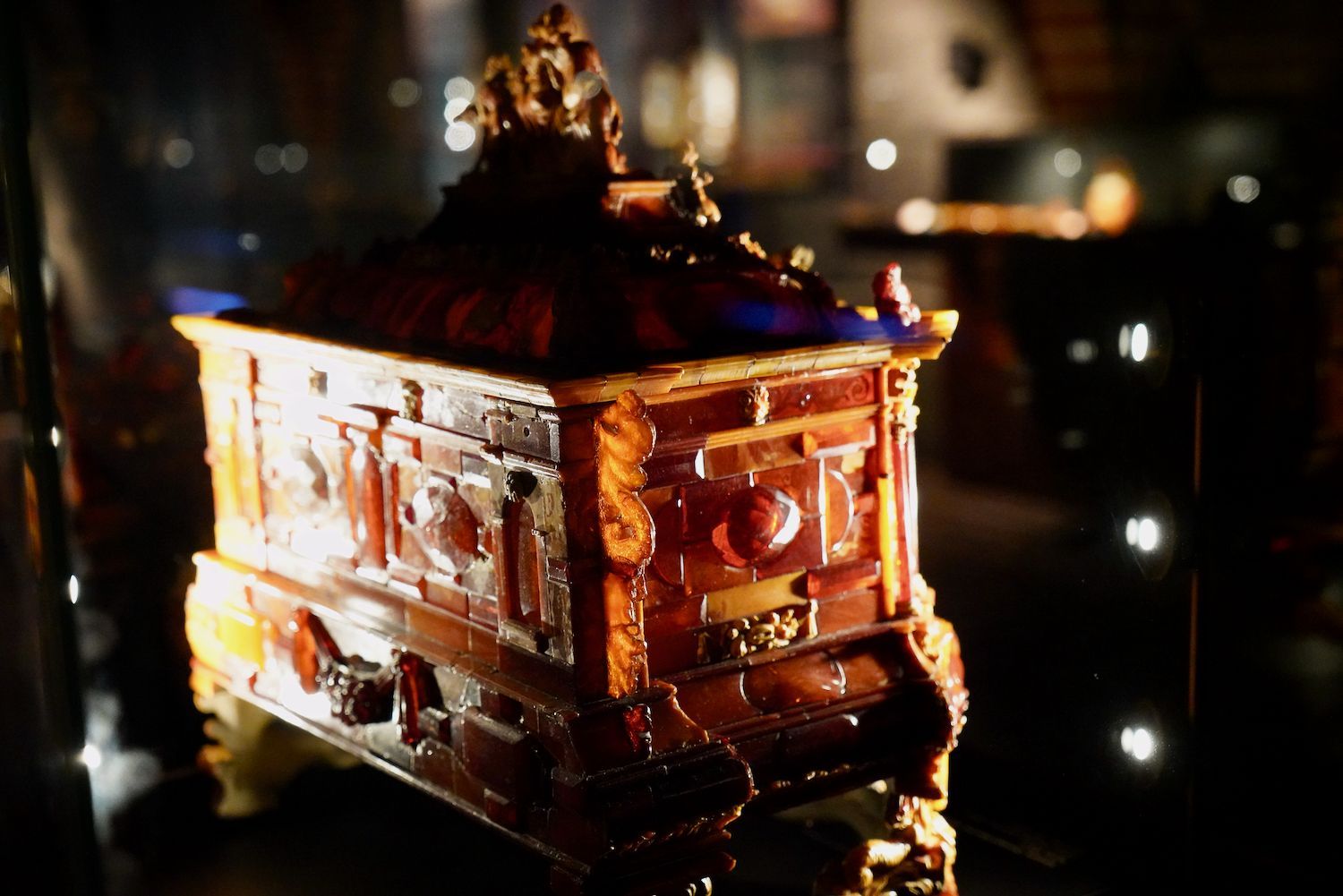

You might want to consider getting hotel for the night in the town of Malbork so you can take your time in the castle and grounds and then also have the chance to explore the town and walk along the beautiful Nogat River.
I hope this inspires you to travel to Poland and experience this journey through the castle and the town of Malbork yourself.
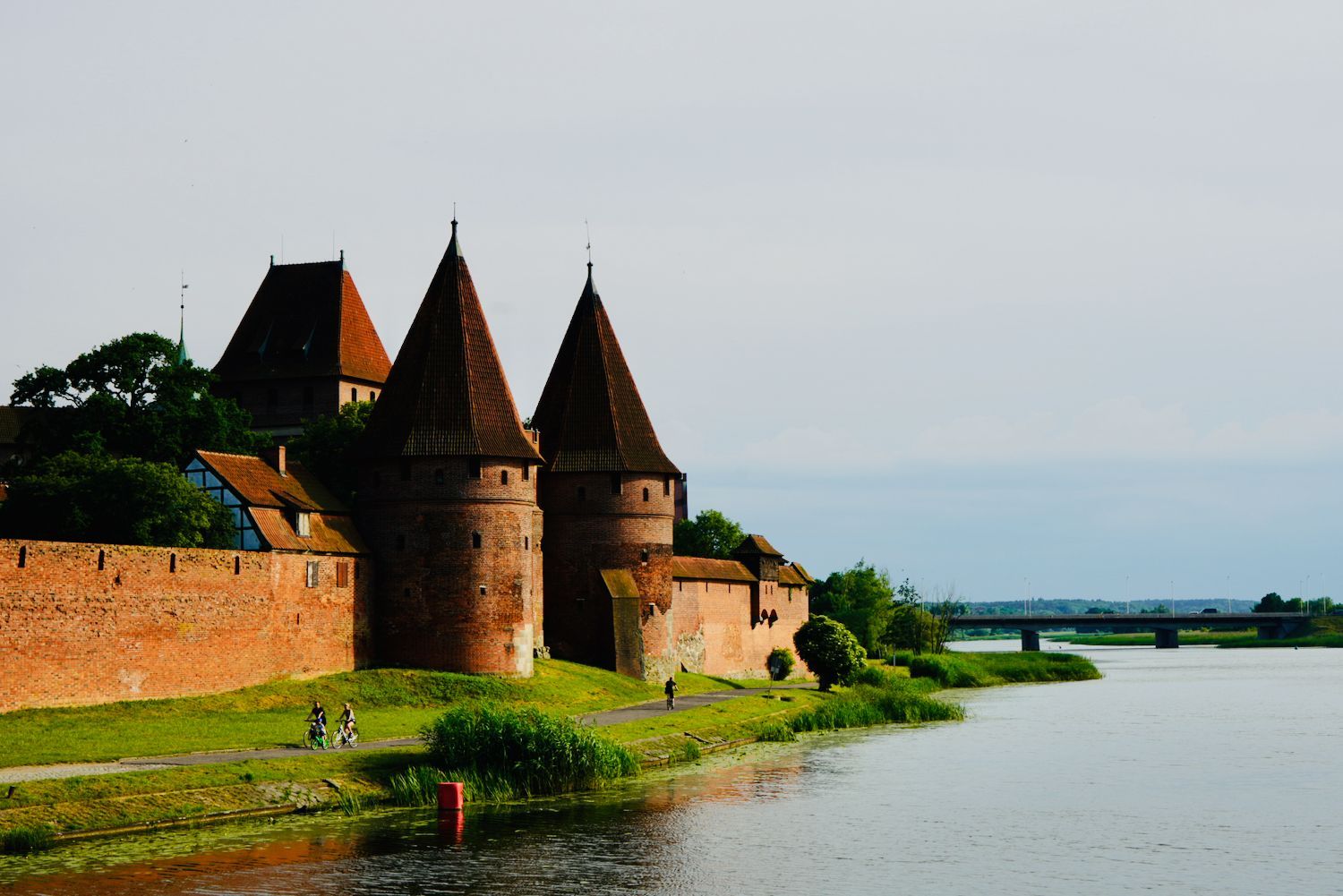
Getting to Malbork
I'd recommend renting a car and driving to Malbork. It's the easiest and most straight forward way of getting there. Parking is easy and it will give you the time you need to explore without being bound by bus or train schedules.
But if you do decided to travel by bus or train, both stations are not far from the castle grounds. Easily walkable in about 15 minutes.
This map above is from Gdańsk, which is only 45 minutes away by car. So either way, by bus or car, it's an easy day trip from Gdańsk to explore Malbork. If you're coming from Warsaw, it's a little farther – almost 4 hours by car.
